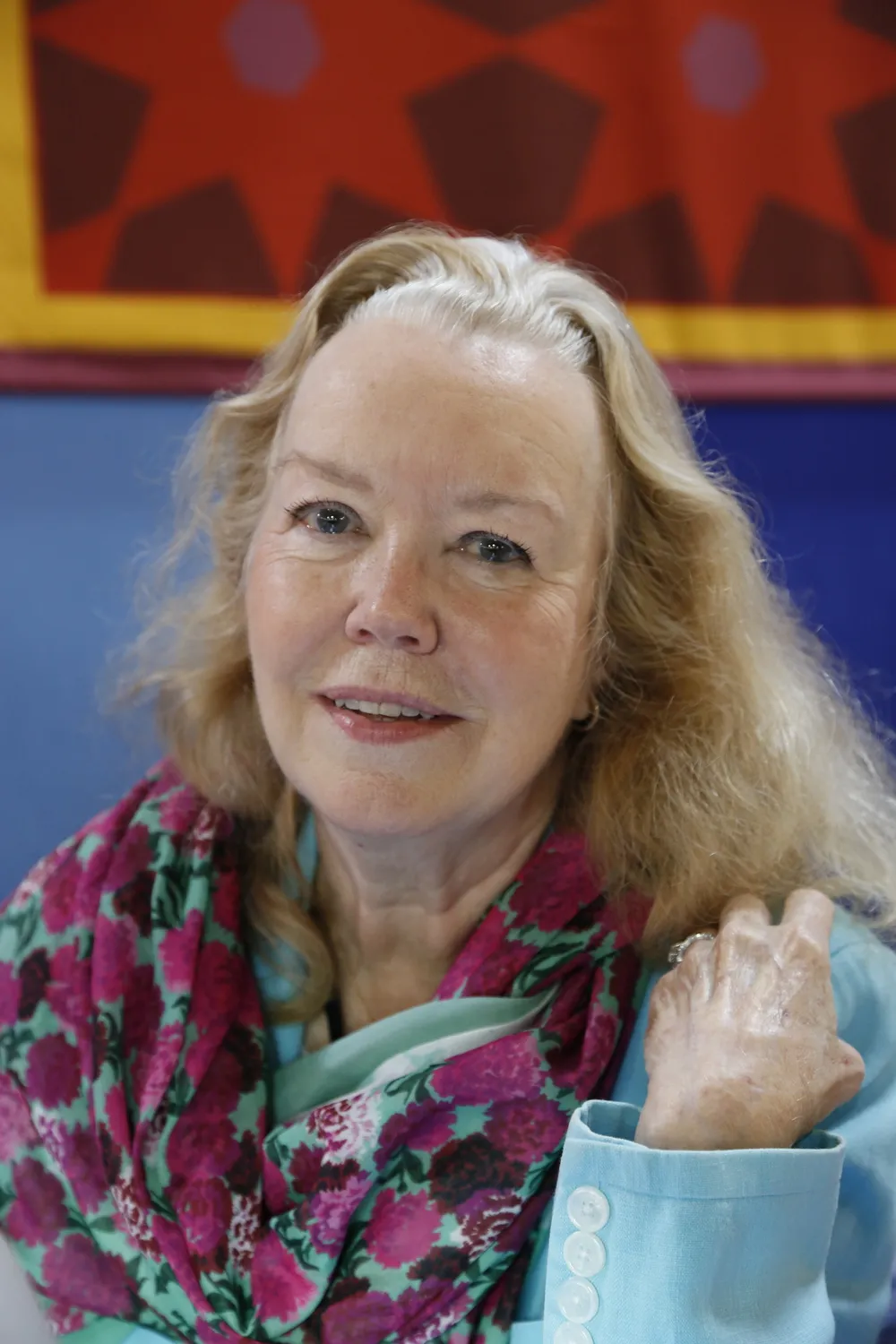Previous Episode

episode
Next Episode

episode
Special: Celebrating Asian-Pacific Heritage (2016)
We shine a spotlight on items with Asian & Pacific Islands origins.
History meets fantasy with treasures fit for a period costume drama!
MARK WALBERG: ANTIQUES ROADSHOW created another wish list for the ultimate costume drama set.
GUEST: That whole early 1900s lifestyle that you see on Downton Abbey.
WALBERG: History meets fantasy, right now on ANTIQUES ROADSHOW: "Mansion Masterpieces."
WALBERG: A real place like Highclere Castle, where Downton Abbey was filmed, helps bring a period drama to life. ANTIQUES ROADSHOW has visited several impressive estates and mansions across America over the years, and of course, we've seen countless numbers of treasures that would be a perfect fit for many a costume drama. We've chosen several to show you now, like this very fine Tiffany lamp.
GUEST: My mother found this in the late '60s. There was a little neighborhood newspaper flyer, and she read that there was a glass lamp for sale. And my mother saw it, knew what it was.
GUEST: And the woman, she also knew what it was. It had belonged to her grandfather. And she had moved into a very small studio apartment, and it was just too large. And my mother asked her, "Well, what would you like for it?" And, uh...
GUEST:She said $125-- a hundred and twenty-five. So my mother...
GUEST: Whoo! Went to the bank real quick.
GUEST: Purchased it and has had it ever since and admires it, loves it.
APPRAISER: And your family has taken very good care of it.
GUEST: Well, there's five of us and my mother did hide it.
GUEST: She had it hidden away in the house when we were young.
GUEST: Because we were kind of rambunctious and, uh... it has just recently emerged.
APPRAISER: Well, let me tell you a little bit about your lamp. You do know that it was made by the Tiffany Studios, which was the firm that was owned and operated by Louis Comfort Tiffany, who was the son of the founder of Tiffany and Company. This probably dates from, I would say, the year 1905. The shade is called the "Rose Helmet Shade." The helmet, of course, refers to the shape looking like a helmet. It rests on this absolutely magnificent example of a Tiffany base. It has a wonderful Art Nouveau quality to it, and it's called the "Arc and Leaf." And if you look down closely to the base you will see these wonderful stylized leaf forms that follow all around the edge and then are repeated in a slightly different style moving up towards the top of the base. Over the years, the bases and the shades can get separated, and what's very interesting about this base is that I believe that this has stayed together all these years. If you notice under the shade, this is gold leading and the gold leading matches the gold on the base. And I have to say that the base is really unusual. I can count on one hand how many times I've seen this base, it's so unusual. This is a situation where the base is almost as great as the shade. These were always luxury items when Tiffany was making them. You would find them in the homes of many of the people who belonged to New York society. This lamp probably cost in the neighborhood of maybe at least $200 to buy, and that was a lot of money in 1905, absolutely.
GUEST: The woman who was selling it, because she did know it was a Tiffany, she had taken it in to two dealers in her area, and the one dealer looked at it and she said, "It's not a Tiffany. It's the wrong finish on the base." And so she was turned around by two different dealers.
APPRAISER: Okay, well, that's okay. This is called the "etched doré finish." It's as right as rain. It's just... everything is beautiful about this lamp. So, now let me just give you the good news: this lamp is worth between $80,000 and $125,000.
GUESTS: (laughing and sobbing)
APPRAISER: Mom had a good eye.
GUESTS: (laughs)
APPRAISER: Congratulations.
GUESTS: (laughing and sobbing)
(light applause)
APPRAISER: I have to give you guys a hug.
GUESTS: (sobbing)
APPRAISER: Isn't it great to get news... Oh, you're so cute! That’s great!
GUESTS: (sobbing continues)
APPRAISER: Wow...
GUEST: This came from my father's collection. He passed away—uhm-- a year ago this month, and he had a collection of bronzes, and he has three daughters. And he kind of divvied up the bronzes, and this is the one that I happened to get. And it's one of my favorites.
APPRAISER: And do you know anything about it?
GUEST: I do know just a little bit about the artist. I know that she's from Philadelphia. I don't know much about this particular piece, what it's for. I know a lot of people who look at the piece always say she looks like a hood ornament, and so we've always assumed that it might be a hood ornament. I use it as a paperweight or sitting on top of my books on my coffee table in my living room.
APPRAISER: And you say you knocked it over last week?
GUEST: No, my cats knocked it over.
APPRAISER: Your cats knocked it over. You've brought in a very exciting piece. Why, thank you. It's by an American artist named Harriet Frishmuth, who was very famous in her day. She worked in the early part of the 20th century. She studied in Paris with Auguste Rodin, and she also studied in New York with Gutzon Borglum. He was the sculptor of Mount Rushmore.
GUEST: Wow.
APPRAISER: Her works appear in many museums. The Metropolitan Museum of Art in New York has a huge, life-size figure. She made lots of figures of women, and she did quite a number of fountains.
GUEST: Wow, yeah.
APPRAISER: So she was very prominent in her day. And the piece you have is signed by her and is dated 1923, which is the high point of her career. It is a hood ornament for a car.
GUEST: Oh, okay, good.
APPRAISER: And I brought this book in because there was a very famous foundry here. The Gorham Foundry was here in Providence, and Gorham was known primarily for its silver work, but they did a lot of bronze work of extraordinary quality. And this is a catalog from 1928, and here we have a picture of a hood ornament that Harriet Frishmuth also did. And the piece you have is a model that I've never seen. We've handled a lot of Harriet Frishmuth sculptures in our shop, and I've never seen this model. It's very, very rare. Hood ornaments for big cars started around 1911 with Charles Sykes, who did the Rolls Royce emblem called "The Spirit of Ecstasy," and they became popular in the teens and the 1920s, and this would be on a car that would have one of those long hoods, and the radiator would be out front. It's beautifully cast. The patina is in very good condition. At auction, a piece like this would probably bring between $20,000 and $30,000.
GUEST: Wow. Wow, that's awesome.
APPRAISER: Isn't it?
GUEST: That's retirement. To help my mom out. I mean, we said that if it was anything like that, we would possibly sell it if we could get that kind of money for it and give it to my mom, definitely.
APPRAISER: Okay, that’s great.
GUEST: Wow.
APPRAISER: You have to keep it away from the cat.
GUEST: Yeah. My sister is going to be, like, going, "Yes!" (laughs)
GUEST: I brought in what I assume is a French clock because that's what I heard from my mother-in-law. My mother-in-law was an antique dealer in Newport, Rhode Island. She kind of came up the hard way. In the '40s and '50s she was a private duty nurse, a single mom, and she had patients that were from the avenue, Bellevue Avenue. And one of these ladies left her a sizeable amount of money when she died, and my mother-in-law loved antiques and she wanted to start an antique shop, so she would go to the auctions. I don't know what she paid for it, but I'd say it was about 1966. She gave it to me when my first daughter was born.
APPRAISER: This clock was probably originally purchased by one of those families on Bellevue Avenue. And at that time, they would go overseas and buy the best that Europe had to offer. This is what we would consider a French-made, French-origin clock, an oversized, very fancy crystal regulator. The standard size of this clock is somewhere in the 12-inch range.
GUEST: Oh, really?
APPRAISER: This one is just over the top. This clock is actually constructed in a brass case.
GUEST: Okay.
APPRAISER: And the finish on the case is a fire gilding. And the nice thing about this example is that it still retains that fire gilding on top of the brass surface. Most of the time, that surface is worn off and oftentimes is tarnished. The slang name for these in Europe is a four-glass clock or a five-glass clock with a centerpiece. We say crystal regulator, implying that it has glass on all four sides.
GUEST: I see.
APPRAISER: Mechanically, clocks like this are very, very good quality and this really represents a period of about 1900 when these were made. Do you have any idea of the value?
GUEST: I did have the movement fixed a couple of months ago, and the clockmaker told me maybe $3,000 to $4,000.
APPRAISER: $3,000 to $4,000. Well, I think today, we're experiencing an uptick. Very fancy clocks like this clock are being sold in this country, and they're going overseas into the Asian market.
GUEST: That's interesting.
APPRAISER: If I had to put an auction estimate on this clock, somewhere in the neighborhood of $8,000 to $10,000.
GUEST: Wow, love that.
APPRAISER: We have a wonderful English sterling muffineer.
GUEST: What?
APPRAISER: English sterling muffineer. In Victorian times, when your servant brought you breakfast in bed, you had sugar and cinnamon in it. It was made in London about 1880. In the marketplace today, $1,500 to $2,000. It had sort of a multitude of uses, but it was basically a sugar shaker.
GUEST: I brought in a Tiffany cigarette holder. I had it home in my drawer for 50 years. I had bought some things at the auction, and at the last minute, they had box lots, and this was at the bottom of the box.
APPRAISER: Today, if we were selling it at auction, it would be $1,000 to $1,500.
GUEST: Oh, my gosh.
APPRAISER: So there's still a lot of interest in them.
GUEST: Holy cow. Oh, my... I don't even know what to say. I mean, I thought $100 maybe.
GUEST: My husband inherited it from his parents, and we have it displayed in our dining room. And I don't have a lot of silver because silver needs to be cleaned a lot.
APPRAISER: It's rather old. It was made in the year 1789 by a man named John Lautier. On the retail setting, it would probably be priced at around $2,500.
GUEST: Really? Oh, wow.
GUEST: This was purchased by my grandmother when she and my grandfather went to Europe for a trip in the early '20s and went to Paris, and this was purchased from Gabrielle Chanel. I discovered that it probably comes from the period of 1921 to 1928 because of the embroidery work that's done on it. There was a woman from Russia, she was actually a princess, and when she escaped from Russia, she went to Paris and was introduced to Gabrielle Chanel, and she was apparently influenced by flamboyant colors and the flamboyant things of Russian art and artistry.
APPRAISER: It is more vibrant than you normally see for Chanel. It is exciting to see it because it really is Chanel. The label is exactly right, and the color is so flamboyant and so wild, it's just fabulous. And your period of time is exactly right. This is not just Chanel, this is Chanel Couture. It is a whole 'nother level of value because this garment was custom-designed, custom-made. If you were to go to a major auction or a major dealer to buy a piece like this, you would expect to pay somewhere between $25,000 and $30,000 for this coat.
GUEST: Wow.
APPRAISER: Isn't that cool?
GUEST: Yes, it is!
GUEST: I brought in a partial Shakespeare first folio that I have had for about 15 years, and it's been in my family since my great-grandfather acquired it earlier in the 20th century, I believe. He collected a lot of interesting things from all over the world, so this is just one of his interesting things that he brought home with him.
APPRAISER: If you talked about an iconic book in the English language, the First Folio Shakespeare is one of them. Probably next to the Bible, Shakespeare's the most commonly printed book in the English language. Usually when you have a book and you say, "It's only 176 pages out of..." I think it was 400-something.
GUEST: 400-something.
APPRAISER: So it really is a partial book. But you open it up and there's no title page, we are missing pages, and usually you'd say, "Gee, this isn't going to be anything." This is the first part of Henry. Then we get to the next one.
GUEST: That's the third... Yeah, the third part of Henry VI.
APPRAISER: And then Hamlet. When you turn it back one page, you're just finishing up Macbeth. Now, this book was rebound. The rebinding is a very nice job, but it's not the original. They probably did it in the late 1800s, early 1900s. Two of the plays are complete. Those plays in and of themselves are valuable. You could take this book apart, sell the two individual plays that are complete. People will buy individual pages. Nice thing about this book, too, is when they bound it, they didn't trim any of the text or any of the borders. Now, you had an appraisal done earlier.
GUEST: There was an appraisal 20 years ago at $1,500.
APPRAISER: The individual plays that are complete have gone up tremendously. They're probably worth $10,000, $15,000 each.
GUEST: Wow.
APPRAISER: And then you have around 160, 170 individual pages. $100 a piece, that might be close to another $10,000, $15,000.
GUEST: Wow.
APPRAISER: Basically, this book, as it is, is probably, retail, a $40,000 to $50,000 book, which has gone up a lot since 1990.
GUEST: Yes, it has.
APPRAISER: I would advise insuring it if you're keeping it at home. It probably should be gone through page by page by page, double checking if this all came from one particular volume or maybe it possibly might have come from one or two. Sometimes, maybe a play was separate and they put it together. So all of that is part of the research. If this were to turn out to be a mixture of first and second editions, it's not going to make much difference. It might be $35,000 to $40,000 or $45,000. It's not going to make a big difference.
GUEST: Thank you very much.
APPRAISER: Thank you.
GUEST: This painting came into the family through my husband's Aunt Miriam, who was a very wealthy lady who enjoyed the finer things in life. She traveled extensively around the world.
APPRAISER: Right.
GUEST: And this was one of her paintings, and when she passed away, it went into my husband's mother and father's house, where it stayed for a very long time. And a couple of years ago, we talked my father-in-law into letting us keep it in our house. And, um... we know it's a Henry Woods-- or we think so-- and we also have a book that came from 1915, an art show of his work, and we saw that it has an actual photograph of that picture.
APPRAISER: I'm guessing about the family, but I suspect there may have been a smoker there.
GUEST: Right, see how it's so much brighter in here than it is over here? My husband's family smoked heavily.
APPRAISER: I would have to say I get the sense that this painting had a four-pack-a-day habit.
GUEST: Probably.
APPRAISER: And I'm surprised these poor girls aren't coughing.
GUEST: (laughs)
APPRAISER: The reason we can tell that, as you've pointed out, we've got this wonderful little illustration. It's the same painting, but look at the difference, the white coming through the doorway and up here. Really needs a clean.
GUEST: Yes.
APPRAISER: I'm always telling people to get their paintings cleaned, but we have the advantage of actually knowing what it originally looked like. Now, you've got the book about Henry Woods. What have you learned about him?
GUEST: What I've learned is that he was an English artist who fell in love with Venice and became famous for his Venetian scenes. And this painting is called La Tombola, and it's a card game that they're playing called Tombola. But basically, that's all I know.
APPRAISER: He was well known for depicting life in Venice. He moved there when he was about 30 years old. He was from Warrington, in England, where he studied art originally, before going on to the South Kensington Museum, which is now better known as the Victoria and Albert in London. But as you say, like many artists before and since, he was seduced by Venice and the whole lifestyle, and it's his Venice scenes that are most popular. But even while he was living there, he showed his work at the Royal Academy in London, so the work was sent back over there, and he was, in fact, a very prestigious member of the academy. And he was to live in Venice until his death in 1921.
GUEST: Oh, okay.
APPRAISER: This one, as we know from the book, dates from 1904.
GUEST: Yes.
APPRAISER: Now, he was also an illustrator early on, and I think we can see his skills as an illustrator coming out in this painting. Interestingly, actually, he illustrated books for some of the well-known Victorian writers, like Trollope and also Wilkie Collins. And I think when you look at the detail in these faces, really marvelous detail-- which, I assure you, will come up even more when it's been cleaned.
GUEST: Uh-huh.
APPRAISER: It's a really marvelous example of his work. Now, value. Any thoughts about that?
GUEST: I have absolutely no idea. I mean, I don't think that we've ever cleaned it because we didn't know if it was real.
APPRAISER: I think at auction, a painting of this caliber, by an artist as important as Henry Woods was, even without restoration should easily fetch $30,000 to $50,000.
GUEST: Wow. Really?
APPRAISER: Yeah.
GUEST: Wow, that's great.
GUEST: This has come down through my family, which is originally from the Pittsburgh area since the time that Pittsburgh was even founded, and I think I might be the fifth or sixth generation that has had it. It came through my mom's side of the family. Way back, we had some maiden aunts whose dad was a financier in Pittsburgh. It came through them, and they called it a hot chocolate set.
APPRAISER: And do you know who made it or where it's from?
GUEST: No, my grandmother always told me it was Sèvres.
APPRAISER: First of all, we look at the mark on the bottom, and right here on the bottom, we have the word "France," so we know where it's from, it's from France.
GUEST: Okay.
APPRAISER: And then above that is a Sèvres mark, but actually, it is a Sèvres-style mark. And almost everything that is marked with a Sèvres mark was not actually made by Sèvres.
GUEST: Okay.
APPRAISER: In this case, this particular set was not made by Sèvres. We don't know who made this set, but it kind of doesn't matter. Now, because it says the word "France," we know it was made after 1891, so this is probably 1890s, 1910. It is exceptionally good quality. I mean, this is magnificent in terms of quality. Fantastic. And it would seem strange that someone would manufacture something with a fake mark that is such high quality. You'd think they'd want credit for it.
GUEST: Exactly.
APPRAISER: All of the scenes are entirely hand-painted on it. All of the gold detailing, which is raised, which is a much more expensive process than flat, is all done by hand. And some of the backgrounds are iridescent…
GUEST: Yeah!
APPRAISER: … and around the turn of the century, that was kind of a new thing. It's iridescent like Tiffany glass iridescent. And so that was very popular in this time period. And you've got several different colors of iridescence in the design, so that's another thing that helps date it. Now, it really doesn't look that much like what real Sèvres made. The shapes are similar, but not exactly. Now, this particular color in French porcelain is usually called rose pompadour, which is a term that Sèvres originated, with the pink rose color. And what we would call this is a cabaret. Someone could have certainly served whatever they wanted to in it, but probably what they did was put it on display.
GUEST: Right, right.
APPRAISER: Now, your family that originally had it, did they have much money?
GUEST: They were very wealthy. They were early in the steel industry in Pittsburgh, they were contemporaries of the Fricks and the Carnegies, and they traveled, all that whole early 1900s lifestyle that you see on Downton Abbey. I think they were very much like that.
APPRAISER: Right, well, that is no surprise because the quality is so high. When this was new, around 1900, this would have been some of the most expensive porcelains that you could have bought.
GUEST: Get out!
APPRAISER: It would have cost an immense amount of money. Certainly, they could have bought it in France or in travels, but they could have bought it at the best stores in Pittsburgh or Boston or New York.
GUEST: Right.
APPRAISER: Now, despite the fact that it was not actually made by Sèvres, it still has really nice value, and in today's market, I would think that a retail value for this set would be between $5,000 and $7,000.
GUEST: (voice breaking): Thank you, that's great.
APPRAISER: It is a nice set.
GUEST: Thank you.
GUEST: It was originally my grandfather's. He got it during World War I, and being first-generation German descent, they wouldn't give him any firearms, and he bought this as a memento piece, since he couldn't keep, like, a firearm or anything. It's my understanding that he bought it at the PX of Fort Dixon in Iowa.
APPRAISER: Okay, and when would that have been?
GUEST: I believe it was 1915. He never talked about it. He put all his stuff in a box, basically, and it pretty much stayed there until the grandkids started rummaging through things, and then we found out that this had a radium face on it and my grandmother wouldn't let us play with it anymore. So I haven't seen it for probably 30 years.
APPRAISER: This watch would have been made in 1915. Prior to the First World War, it was very unusual for gentlemen to wear wristwatches. They would always wear pocket watches. And the idea of a man wearing a piece of jewelry was very much frowned upon. It was only really when the war started that they found in the trenches and in combat the practicalities of having a pocket watch... it was very difficult. So the men actually designed a way to strap their pocket watches onto their wrists.
GUEST: All right.
APPRAISER: Now, here we have a very classic example where a manufacturer has basically adapted that idea. This watch is effectively a pocket watch that's been modified to be strapped onto a piece of leather with a protective guard over the dial. Another aspect taken from the First World War was this type of black enamel dial. Most enamel dials were made in white. The black, obviously, anti-reflective and much better for nighttime, and far less chance of being seen from that point of view. It's actually advertised on the box as having radium. The radium has now gone brown. It has a certain half-life that it will die over a period of time. But it was originally a very bright glow that allowed them to glow in the dark. And it really wasn't harmful to individuals. The harmful part was to the poor people that were painting the dials. They were actually painted by hand. And you'd have these young ladies that would use a paintbrush, if you imagine, and lick the end of the paintbrush, dip it into the radium...
GUEST: I've heard that story before.
APPRAISER: Write the numerals and then, at the end of each one, lick again, back into the radium. Very, very dangerous. Now, this particular example remained in very good condition. If you can imagine, most military examples that were made simply were destroyed or brought back, given to the kids. Its main interest is, historically, the fact that it was one of the very first-ever wristwatches. Also, the condition and that it still has the original box with it. Value-wise, if it were to sell at auction today, you'd be looking at a number around a thousand dollars.
GUEST: Okay. I'm pleasantly surprised, considering that the price on the box is $4.50.
APPRAISER: Some increase in the value over the years.
GUEST: Yes, it was.
GUEST: It was my mother's. I really don't know where she got it.
APPRAISER: This piece is about 350 to 400 years old.
GUEST: Oh, my!
APPRAISER: It's called stumpwork, and it was made in England. This started out as the top of a box. The value is $8,000 retail.
GUEST: Oh, my!
APPRAISER: I love the quality of these. They're some of the best quality English porcelain you can find. They're made by Minton, which is a big name in English porcelain and has been for over 200 years. Worth about $2,000, maybe $3,000 for the pair.
APPRAISER: This is called an argyle. It is an insulated double-walled pot, and it's actually meant to keep gravy warm.
GUEST: Gravy!
APPRAISER: And what you do is use the spout on this side and fill up hot water inside here. And then you'd put your gravy in the interior and pour the gravy out here. Auction value would probably be about $300 to $500.
GUEST: Wow! Oh, my goodness. I'm shocked.
GUEST: These were my mother's. She collected them.
APPRAISER: You have a great collection of sock darners. This one is the most valuable one. It's by Steuben, it's Aurene, and it would probably sell at auction between $200 and $400. And the cranberry swirl would be about $150 to $200. The cobalt blue, about $100 to $150. And this type was usually done at the end of the day as sort of a whimsy, and it would probably be about $100 to $125. Oh, and here we have a peach blow, that's $100 to $150 also. Most of these were never meant to be sold; they were actually done by glassblowers to take home. All of these down here are a little bit less. You have some unusual wooden ones. Have you ever had them appraised?
GUEST: No, I haven't.
APPRAISER: I think that if we did the whole collection at auction, it would probably go somewhere between $1,000 and $1,200.
GUEST: Well, I inherited them from my father's family. His father's first cousin's half-sister had them. And they ended up with my grandfather's first cousin. And when her house was disposed of, they came to me. I have had them probably 20 years.
APPRAISER: Howard Carter is best known as an important archaeologist and Egyptologist. But he actually started off as an artist. His father was a British artist. He studied with his father and in the late 19th century, at only 17 years of age, he went to Egypt, where he acted as a field journalist for Flinders Petrie and a number of the other archaeologists. But, as you know...
GUEST: (chuckling): Oh, yes.
APPRAISER: His claim to fame started in 1907, when he was under the patronage of Lord Carnarvon.
GUEST: Yeah.
APPRAISER: And why don't you tell us what Howard Carter found?
GUEST: Oh, he's famous for King Tut. I don't have King Tut. (chuckles)
APPRAISER: Absolutely. Howard Carter was the archaeologist on site at the founding of the King Tut tomb, the Tutankhamun tomb. The excavation started in 1907 and was off and on until 1922. And in November of that year, Carter broke a hole into the ground. And as Carnarvon had said to him, "Can you see anything?" Carter said, "Yes, wonderful things." So these are wonderful examples of Carter's early work from 1904. Excavations at the Hatshepsut site and also at the Thutmose excavations. At this point, Carter was an excavation journalist. And you can see here where he is showing the figure as it appears on the tomb wall with the abrasions. This isn't damaged at all. It is the artist recreating what he saw on the tomb walls. His artwork is very popular. Aside from him being an Egyptologist and an archaeologist, his watercolors are highly valued. I would value them at between $6,000 and $8,000 apiece.
GUEST: Apiece?
APPRAISER: Apiece, on a retail venue.
GUEST: Oh, my heavens! I think my cousins will ask for them back. (chuckling)
GUEST: This was presented to one of my relatives in 1844. My parents went to England in the '70s, and this was given to them to bring back to the States. And apparently, it's a silver tankard that was presented to my great-great-great-grandfather. He was a judge and a secretary of a coursing club just outside of London. And this was a token of the club's appreciation for his work as a judge and for the duties that he had with them so…
APPRAISER: Now, you said a coursing club?
GUEST: It's a... basically the chasing of game, of small game, foxes and hares, with a pack of two dogs. It was a sport that was started way back and still going on today, but not with live game. There's been some changes, apparently, so...
APPRAISER: Yes, there was a law passed, wasn't there, in England that they couldn't use live game anymore? Yeah, I believe it was in 2005 they passed a law. English silver was always considered very valuable. And when somebody's estate was listed, they would give the number of ounces of plate they would call a solid silver plate. And it was often sold and traded. So this piece was actually made in London in 1752 by John Smith. And you can see his set of hallmarks on the bottom. It has the leopard's head for London, the lion, meaning that it's solid silver, and the date letter for the year 1752. So this piece of silver would have been very plain. It was probably engraved with a family coat of arms. And when it was sold, probably secondhand, in the 1840s, it then went to a silversmith from that period, who took the piece and embellished it, chased and engraved it with the various hunting scenes. And then the inscription was engraved on it to be presented to your ancestor. The inscription is quite interesting. You said it is 1844.
GUEST: Yes, March of 1844 it was presented to William Atwood.
APPRAISER: Now, did he participate in the game?
GUEST: I was told by my father that he was a sportsman, and he actually trained dogs. Yes, he was active in the sport himself.
APPRAISER: I feel that a retail price on this piece would be between $3,000 and $5,000.
GUEST: Wow. Is it safe to drink beer out of it?
APPRAISER: Absolutely.
GUEST: (laughing): Okay.
GUEST: They were my mother's dolls, and my aunt told me that she had had them since she was a little girl.
APPRAISER: And any sort of time frame, time period when your mom would have had them?
GUEST: It would have been in probably '20s and '30s.
APPRAISER: It's interesting because you have a pair of twins, and they were designed by a lady by the name of Grace Cory Rockwell, in New York. And her first doll she made has a very funny name called "Fuji Wuji." And she actually designed these two dolls around 1925. Grace Cory Rockwell, an American designer. She had the heads produced in Germany by a company called J.D. Kestner. And the dolls were marketed through the Century Doll Company of New York. Very, very rare to find a pair of them. The bodies are made in America. They're American composition. In the '20s, most of the dolls were being made in America, so it's very rare to still find the bisque heads on them. The doll on the right has a little bit of a problem. Looks like your mom must have dropped it and broken it at some time, whereas the other one is in good shape. If you turn this one around, you'll see Grace Cory's signature on the back of the doll. Now, these were luxury dolls in their time. They weren't a five-and-dime item. You would get them at Schwartz's. They probably sold, when they were new, for probably five to ten dollars apiece. If the one hadn't had the little concussion in its life, the pair would have been worth around $8,000 for the two of them. So the perfect doll is worth around $4,000-- $3,000 to $4,000. The damaged one's worth, I would say, probably $600 to $800. So your mom had two wonderful little dolls in her life.
GUEST: Oh, she did.
GUEST: There was a dealer here in town, a very Bohemian sort of lady, who got interesting pieces. She would never tell you their provenance, so I have no idea from whence it came from her. She called me one day and she said, "I've got this piece that looks like you." It was relatively expensive 30 years ago.
APPRAISER: Okay.
GUEST: I paid $10,000 for it. I said, "Well, I've got to do a little bit of research” if I'm going to tell my husband I'm going to spend that much money for something. I have to know a little bit about it. And the base of it actually has the label, which I'm not sure was the original label. I think it may have been the gilder that probably regilded the piece. And I went to the library and I was able to establish that it had been in York, England, in at least 1816 to 1820, because that was the address where his shop was during that period.
APPRAISER: Okay, okay.
GUEST: So I said, "Okay, I'm going to pony up and take it." Well, it's been in my home ever since.
APPRAISER: First of all, this is one of the greatest pieces of English furniture I have ever seen in ANTIQUES ROADSHOW. It is so exciting to see this cabinet covered in needlework. And we have this incredibly elaborate base with lion's paw feet.
GUEST: Oh, hairy paw feet, yeah.
APPRAISER: Hairy paw, exactly, with hair coming down the leg, trailing down. Let's look at it here. And trailing down, and then at the top, of course, these very fierce, bold lions.
GUEST: Wonderful lions.
APPRAISER: So all of these elements-- the flower heads, the acanthus leaf scrolls. Look at the drapery that draped across.
GUEST: Oh, the beautiful drapery.
APPRAISER: And laurel leaves with a beautiful shell and bellflower. And then this wonderful design on the top, these curled bellflowers. It even goes to the back and it's even carved on the inside of the legs, which is so beautiful. All of those elements, all of those characteristics are like a signature of this George II period of English furniture. This would have gone in a castle, basically, a big castle. The great thing is it's not a marriage. Top and bottom were made together.
GUEST: Together.
APPRAISER: In 1730, and that label was of a later gilding. We open it up...and inside, we've got more needlework. These scenes are great, the shepherdess here with her cane, it looks like he's proposing to her. The condition is wonderful. And of course, the sides are done as well. It's just covered, it's fantastic. What do you think this is worth?
GUEST: For my insurance?
APPRAISER: Yes.
GUEST: My guess was something around $40,000.
APPRAISER: Okay, well...
GUEST: That may be overly optimistic.
APPRAISER: We would place an auction estimate on this piece of $80,000 to $120,000. If this cabinet on stand were properly conserved and regilded and brought back to that incredible gold color you can see peeking through that it had originally, the auction estimate would be placed at $150,000 to $250,000. And it could bring even over that. It may cost you $20,000 to $30,000, maybe even slightly more.
GUEST: I understand.
APPRAISER: But I think it would be worth it.
GUEST: It'd be worthwhile to do that.
APPRAISER: I think you've got a great eye and you have passion, and you're a nice lady. Thank you for coming.
GUEST: Thank you.
APPRAISER: Yeah, you've got an amazing piece.
GUEST: (laughs) Muah!
APPRAISER: (laughs)
GUEST: When we were in New Zealand, we met an antiques store dealer and I kept admiring this. We were there for two or three days, and he finally said, "You're gonna give me a $100 American bill and take this home." And I said, "Yes sir, I am."
APPRAISER: Well, it is a pocket globe, and it's a type of thing that a gentleman who had a library would have, and it's more of a novelty item. These bring between $5,000 and $8,000.
GUEST: I wish he'd sold me another one! That's real, real well.
GUEST: This is a painting of my maternal grandfather, and his job was to guard the bedroom door of the czarina.
APPRAISER: First of all, this is an inscription here which does in fact confirm what you're saying. This is "The Lifeguards of the first Artillery Brigade." (speaking Russian) That's like a battalion. (speaking Russian) So "bombardiers." A conservative auction estimate on it would be about $1,000 to $2,000.
GUEST: Awesome.
APPRAISER: Really a wonderful piece, and I hope it stays in your family for a long, long time.
GUEST: It will. My son's already fascinated with it.
APPRAISER: There's a wonderful story about Queen Victoria. She traveled all over the world, and whenever she wore anything, she only wore it once and gave it away because she wanted to promote all the crafts of England. So many, many people have things from Queen Victoria. Because she gave so much away, it's worth about $400 to $500.
GUEST: My husband's mother was an Irish immigrant, and she worked as a governess in the homes of many wealthy families in New York City. Our best bet is that she was given this as a gift from one of those families. And it's lived in basements for decades. We don't know a lot about its history at all. We think perhaps it was a hand-crafted birdcage-- that was pretty much all my husband remembers her ever saying about it.
APPRAISER: Well, clearly hand-crafted. Someone had a lot of time on their hands and put a lot of effort into this. I would date this to the 19th century.
GUEST: Oh, w ow.
APPRAISER: High Victorian style. This almost weird combination of architectural styles. You have Greek classical, you have this mansard roof, you have a widow's walk. It's also a penthouse, so it has a lot going on architecturally. The other thing that's interesting to me is the number of metals that are used. There's tin, there's copper, there's aluminum, this is brass at the corners. It probably had a little bit more paint on it originally, and you can see some remnants of it in the grating on top and in some of the window and wire work. We don't know who made it.
GUEST: Right.
APPRAISER: We do know the time period, and we have an idea of what it's made out of. Bird keeping is not all the rage that it was, but these are highly decorative and highly sought after. I think we'd be looking at about a $5,000 value retail.
GUEST: Really?
APPRAISER: There's a letter in here, which quite frankly is one of the most poignant letters I've ever read, about the Titanic. It's a resolution adopted by the women survivors of the S.S. Titanic assembled on board the S.S. Carpathia April 16, 1912. "We, the lady passengers wish to express to the captain and officers, doctors and crew of the Carpathia our grateful appreciation of their tender kindness, courtesy, and generosity after a night of grief over the loss of fathers, husbands, sons, and brothers who in their fine gallantry and chivalry sacrificed themselves to make our escape and rescue possible. To their memory, we can only make too fitting tribute. For the woman survivors, Margaret Brown, Mrs. William Blanchett, Mrs. George W. Stone." This letter could be worth over $5,000. Anybody who collects anything on the Titanic would just be head over heels with it. I mean, it's one of the finest source letters I've ever seen.
GUEST: This watch sat in a safe in my grandmother's antique shop for I don't know how many years. As kids, we used to go to the shop and ask her husband Ernie, who was the watchmaker, repairer, tinkerer, he had a little workshop in the back, and every time he went in, that's the thing I wanted to see. He would take it out of the safe, he showed it to us, and would show us... "Look at the pearls." And he said that the back of it had snakeskin, so we always called it the snakeskin watch. We'd say, "Show us the snakeskin watch."
APPRAISER: It's an early watch. Do you know when it was made?
GUEST: I have no idea.
APPRAISER: As early as maybe 1780.
GUEST: Oh, my God.
APPRAISER: As late as perhaps 1820, in that range. This is a men's dress pocket watch, only used for the very nicest occasions. And it has the matching chatelaine with it. This is the chatelaine. It would fasten on to the waistband of the owner, and then the watch, as you can see, is attached with a little clip.
GUEST: Right.
APPRAISER: The part that you call snakeskin, actually, that's pretty close, but what it is is a material called shagreen, which is actually shark skin. It's like a leather, and they covered the back with it and then they stained it. The little gold rivets that you see on the back hold the shagreen on, and they're called piqué. That's the outer case, and this is the inner case, and it's got seed pearls around the bezel, which is surrounding the dial. And then on the back, it has a medallion of enamel, which is called guilloché. What they did was they engraved on the gold a kind of a wiggling pattern and then covered it with the enamel. It opens like this. Then it comes forward by swinging out in this manner here. And that's the watch itself, which was very well made, and it's signed as well. It's very unusual to find a watch in such good condition that has its matching chatelaine, and we know it matches because it's the same color enamel as you see on the back of the watch. Quite often, the watch has become separated from the chatelaine and they're different. Do you have any idea what it's worth?
GUEST: Because he kept it, you know, in the safe and never brought it out and made it seem like it was so valuable, I don't know, I'd throw out a guess of maybe $10,000.
APPRAISER: Well, that's a good guess. First of all, the value I think is greatly increased because of the fact that it has the matching chatelaine, and along that line, I want to say that I think the value of this watch, along with this chatelaine, is about $7,500. But on a good day, because of its condition and things, it could bring a price a little higher.
GUEST: My father gave me this painting that I remember it so well when I was a little child in Yorkshire, England. And this lady is my grandmother. She lived in a wonderful house called "The Gleddings" in Halifax, Yorkshire. And the painting was painted by Robert Henri.
APPRAISER: Yes.
GUEST: And he was a friend of the family. She considered herself a Bostonian. She was born outside Boston in West Dedham, Massachusetts. Never worked. I don't think she ever boiled a pot of water for tea. Look at that hand.
APPRAISER: Yeah, a lovely hand. Well, it's a wonderful portrait. It's unusual to find something of this kind at this time. I don't know whether you know much about Robert Henri, but he studied with Thomas Anshutz at the Philadelphia Academy of Fine Arts, with William Merritt Chase, and he founded the Ashcan Society in 1908, when this painting was painted. And he goes off to Holland for the summer, and then in August, we have records that he was then commissioned to do a portrait and went to England to paint a portrait.
GUEST: Ah, and this is it.
APPRAISER: And this is it. This painting combines a number of styles. It speaks to me of William Merritt Chase in the way it's done. The ruddy complexion was probably quite surprising at this time. It's sort of like Francis Bacon in the face here. I mean, this is really bright. And the dry brushstroke is very Ashcan in the way he is rendering this portrait, yet he paints her in a very elegant Chase way. So to me, it's a combination of the Ashcan style and the William Merritt Chase portraiture style. And I love down here, you have the three-stone ruby ring on her, and this jewelry is a decorative element.
GUEST: The mayoral jewels of Halifax. She borrowed them for the painting.
APPRAISER: And I like down here this wonderful fan. Being painted in August, she probably needed the feather fan.
GUEST: Yeah.
APPRAISER: Have you had this appraised?
GUEST: My dad gave it to me in the late '60s when he moved back to England.
APPRAISER: Right.
GUEST: And I sent a photograph of this back to Boston, to the repository of Henri's works.
APPRAISER: Yeah.
GUEST: And they said it was not worth much more than Grandpa paid for it, and Grandpa paid $4,500. And the reason it's not worth much more is because it's a family portrait, and museums wouldn't want it and no one else would want it. But I can tell you, we treasure it. For us, it's a treasure.
APPRAISER: Well, I think there'd be many people who'd want it. I believe you should probably insure this somewhere in the area of $250,000 to $300,000.
GUEST: Oh, no! Oh, my God.
APPRAISER: Because it's early, it's at the time of the founding of the Ashcan school, and you've been a very good caretaker of it.
GUEST: Well, I'm floored. Are you sure about that?
APPRAISER: I am sure about that. It's wonderful.
GUEST: I'm kind of flabbergasted here.
GUEST: I'm a little breathless. Now I don't know what to do.
WALBERG: Did any of the treasures you've seen this hour leave you a little breathless? Perhaps our next appraisal will make your heart beat faster. Coming up, a gift from the prince of Transylvania, right after this.
GUEST: I got it from my mother, who got it from her parents, and it goes back to my great-grandfather, who managed a shipyard during World War I. After the war, he traveled around the world and brought home some souvenirs, and this was one of them. He picked it up in Paris in 1923.
APPRAISER: And we have an original bill of sale, and it's dated 1923, and it came from Arnold Seligmann in Paris. Seligmann was a very well-known connoisseur and collector of antiquities, renaissance jewels, and as he says, curiosities on his bill of sale. And in the bill of sale, he gives it a particular description as well, and the high point is that he says, "This jewel had been made for Gabriel Bethlen"-- he was the prince of Transylvania-- in honor of his marriage to Catherine of Brandenburg, and that it dates from the late 16th century. So what you do have here is the actual jewel. There are many pieces out there that have attributions that are never quite correct, but this piece is 100% correct. Stylistically, it has a very Germanic and Austrian stylization to it, as would be typical of the period. And this was a marriage jewel; this was to commemorate the marriage, and in doing so, it embodies all the different Catholic symbols related to Christianity and marriage. So we have a cross, but the cross also becomes an anchor, which is the anchor of hope. We also have two doves. The two hands on either side, which are enameled, are clenching a heart. The heart is in the background. And then on the bottom here is a skull, and this is related to death and immortality, but also to the idea of love everlasting, till death do we part. The piece is made of gold, and it's highlighted by rose cut diamonds and then accented with both white and green enamel on various portions of the piece. Now, have you ever had this item appraised before?
GUEST: No, I couldn't find anything to compare it to.
APPRAISER: Do you have any idea what was paid for the piece when it was purchased?
GUEST: He paid 45,000 francs. There was a notation on the bottom from New York that says $2,770. That might be an equivalent.
APPRAISER: On the ROADSHOW, we see very few late 16th-century pieces. There just aren't that many out there. And it's the scale and the magnitude of this piece and the symbolism that really makes it so extraordinary. At auction, I would place a value on this of somewhere between $50,000 and $60,000.
GUEST: That's a lot.
APPRAISER: Well, as we would say in the business, "Try to find another one."
GUEST: Yeah.
WALBERG: I'm Mark Walberg, thanks for watching. See you next time on ANTIQUES ROADSHOW.
GUEST: It's either a crocodile or an alligator-- crocodile, I guess—bag that was my grandfather's, I think. I found it in my father's attic in 1989 and have kept it under a sideboard for everyone to look at, and to collect dust.
APPRAISER: I would date it anywhere from 1890 to 1905. This is a handmade piece of luggage, and it's heavy. The Austrians were known for the luxury crafts that they made at the time. It would have been a really costly piece. This type of a valise is extremely rare. Because of its age and slight wear but extraordinary shape and patina, I would say that at auction, this would sell for between $3,000 and $3,500 at least. It's a really great piece, and I hope you don't let it collect any more dust.
GUEST: Well, I certainly will take better care of it than I have.
GUEST: Well, these are a pair of bookends that came out of my grandfather's attic. My great-grandfather was a diplomat in China in the 1920s.
APPRAISER: This scene of dragons among turbulent waves holds special meaning. The dragon is representative of the Chinese Imperial Court. Connotations of immortality and power and substance and continuity. The market for Asian things, particularly Chinese, is really strong, and I think it's probably worth around $5,000 to $8,000.
GUEST: Oh, my goodness!
GUEST: Well, I found out that it's a piece of French cameo made by Gallé around the turn of the century.
APPRAISER: You are absolutely correct about it being Gallé. This is a fire polished piece. You also have silver marks on it. It's sterling. And if you look very, very closely, you can see that this was gilded at one time. For insurance, I would put this piece at $12,000.
GUEST: I'm thrilled!
Watch as history meets fantasy with treasures fit for a period costume drama including a 1907 Robert Henri oil painting, a late 16th century diamond marriage jewel and an English Giltwood cabinet-on-stand. Which is now valued at $500,000-$700,000?
More ways to watch

episode

episode
We shine a spotlight on items with Asian & Pacific Islands origins.
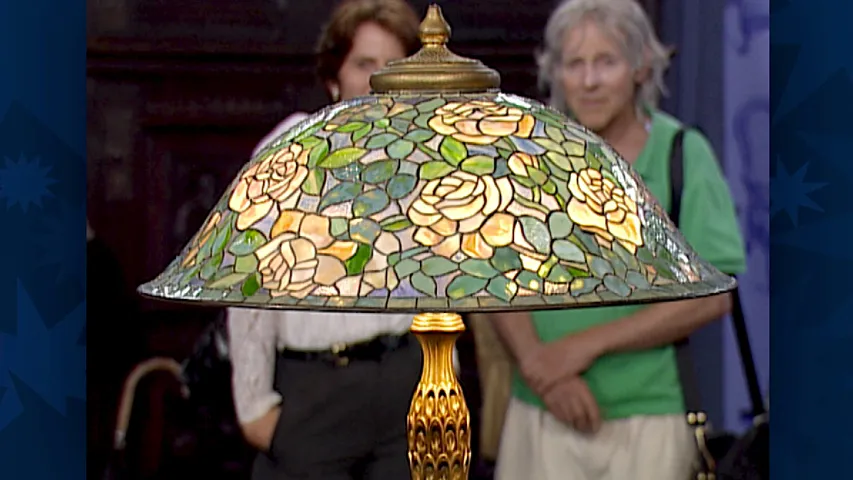
appraisal
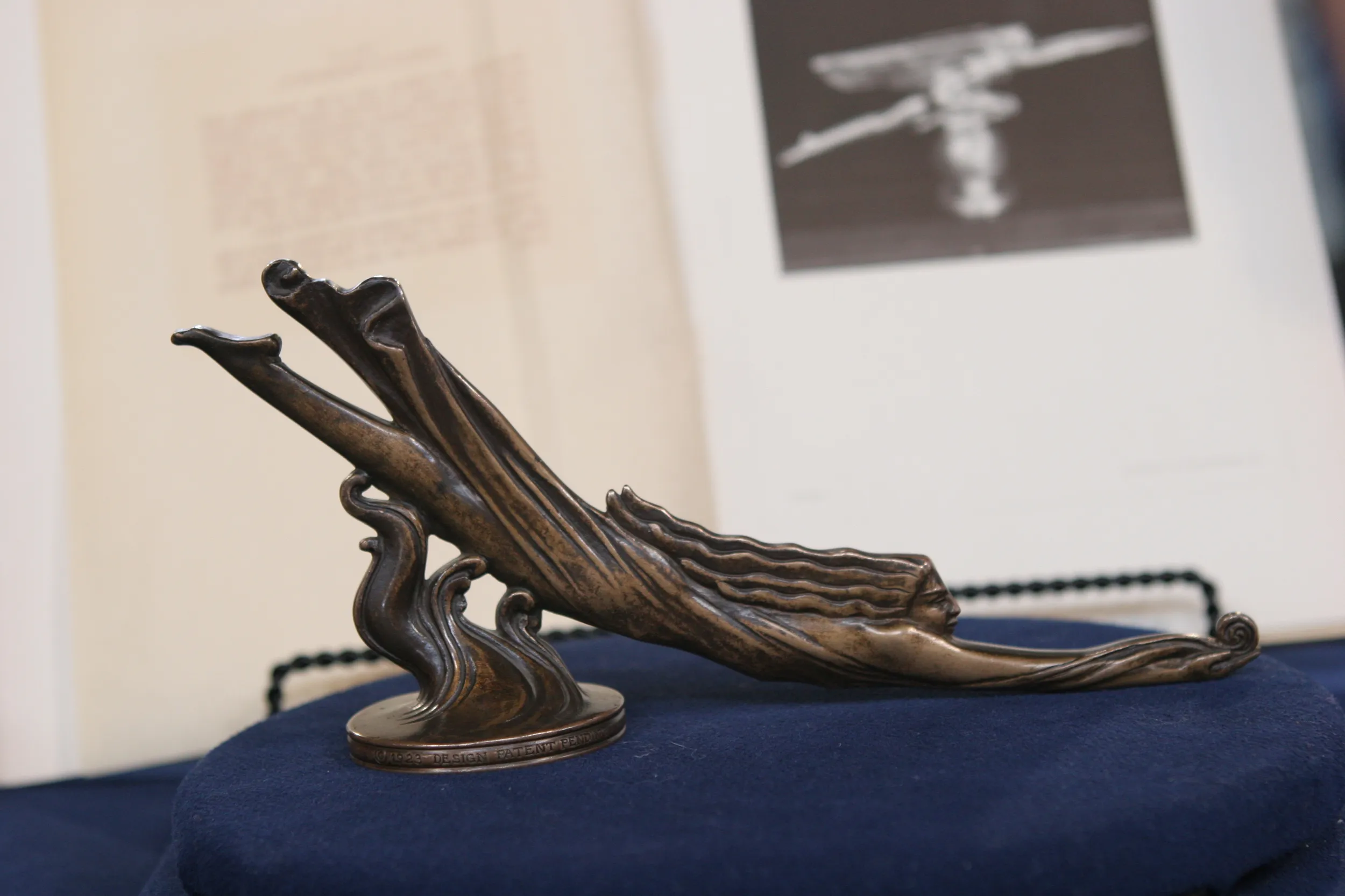
appraisal
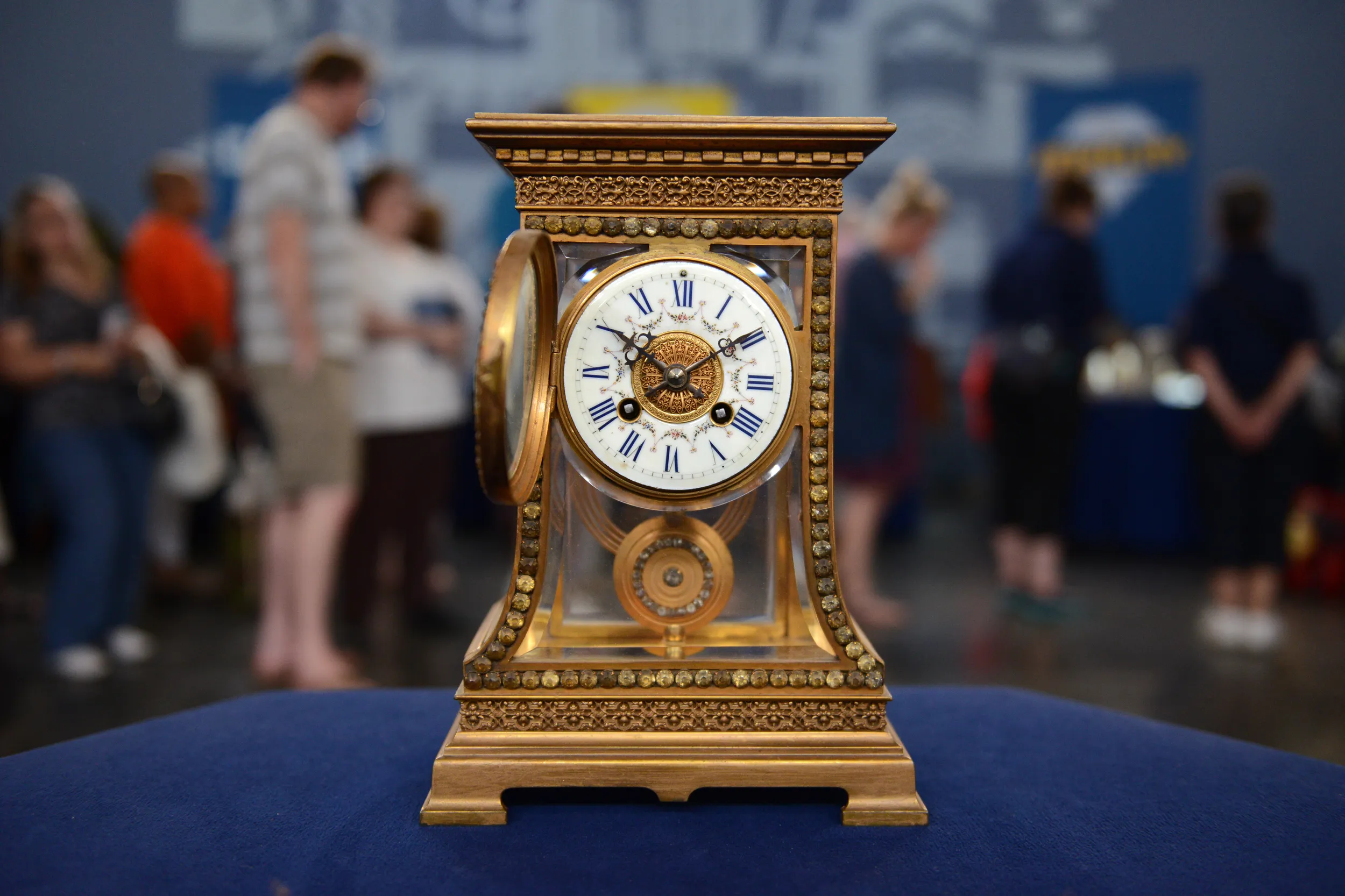
appraisal
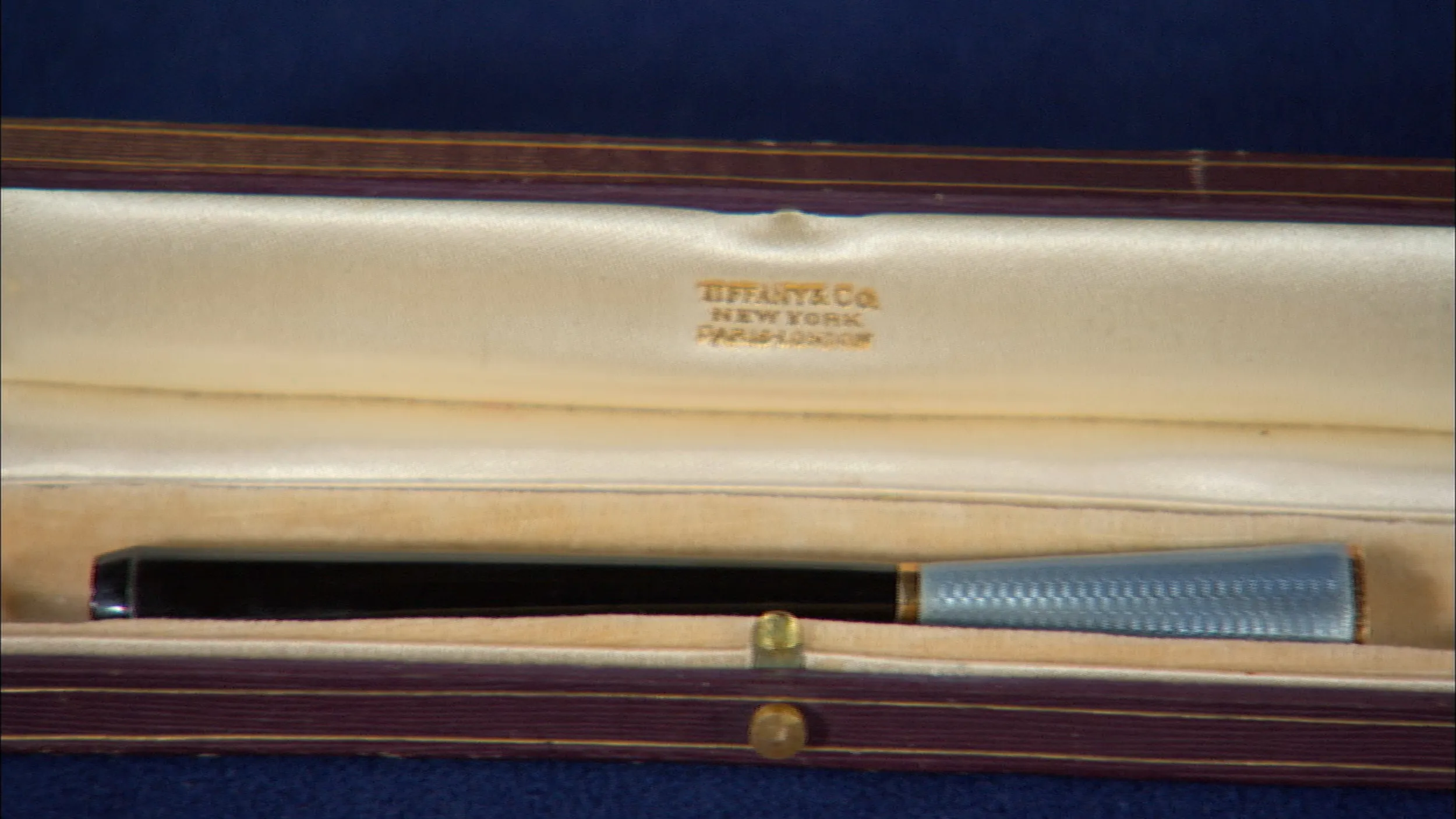
appraisal
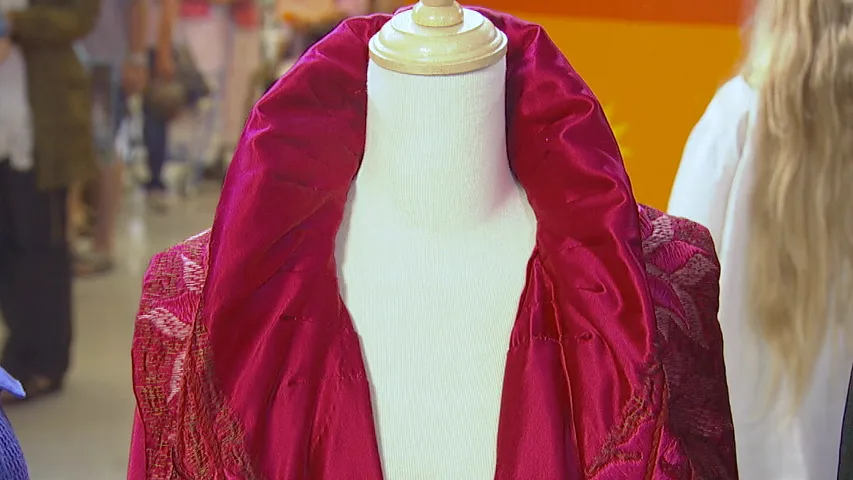
appraisal
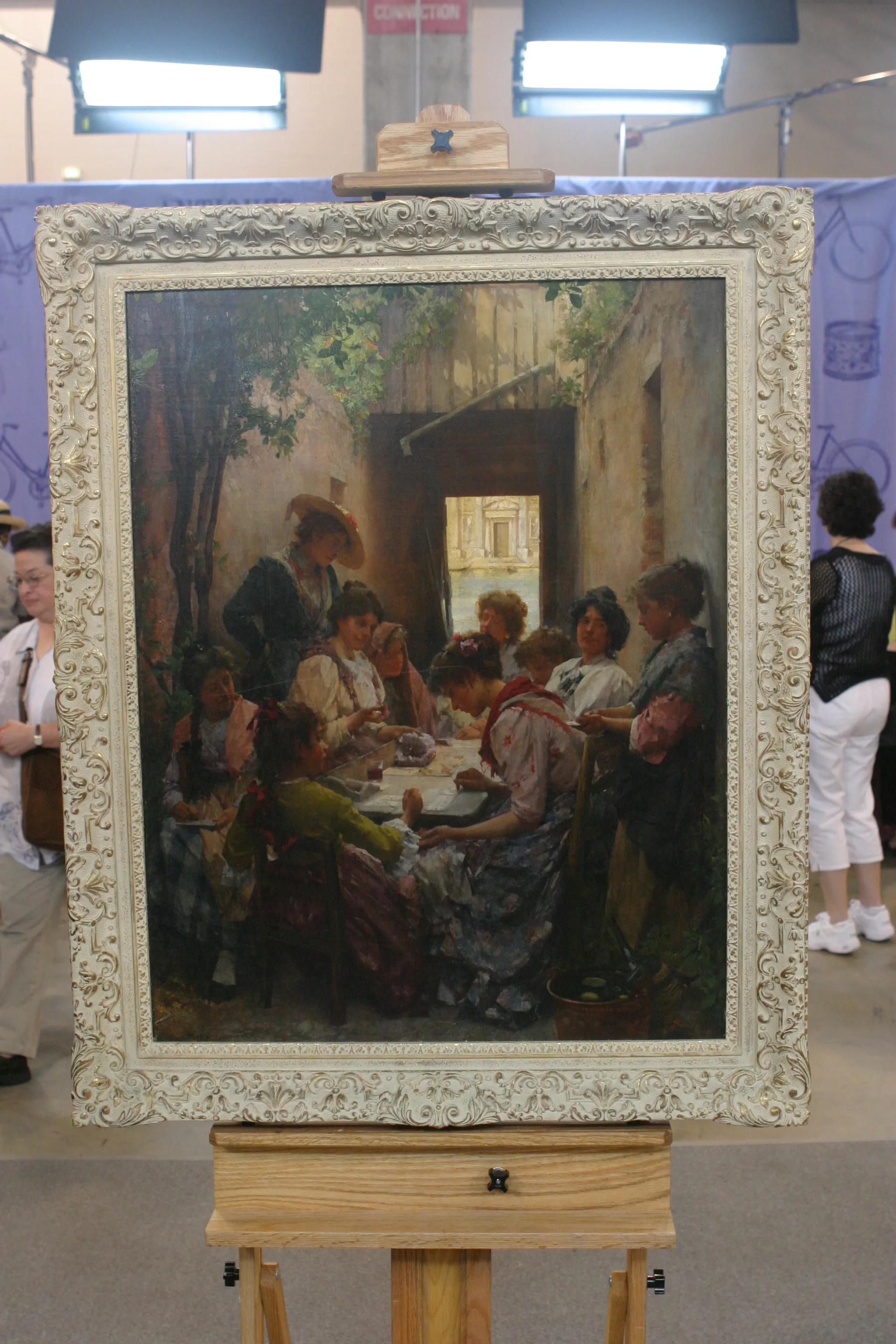
appraisal
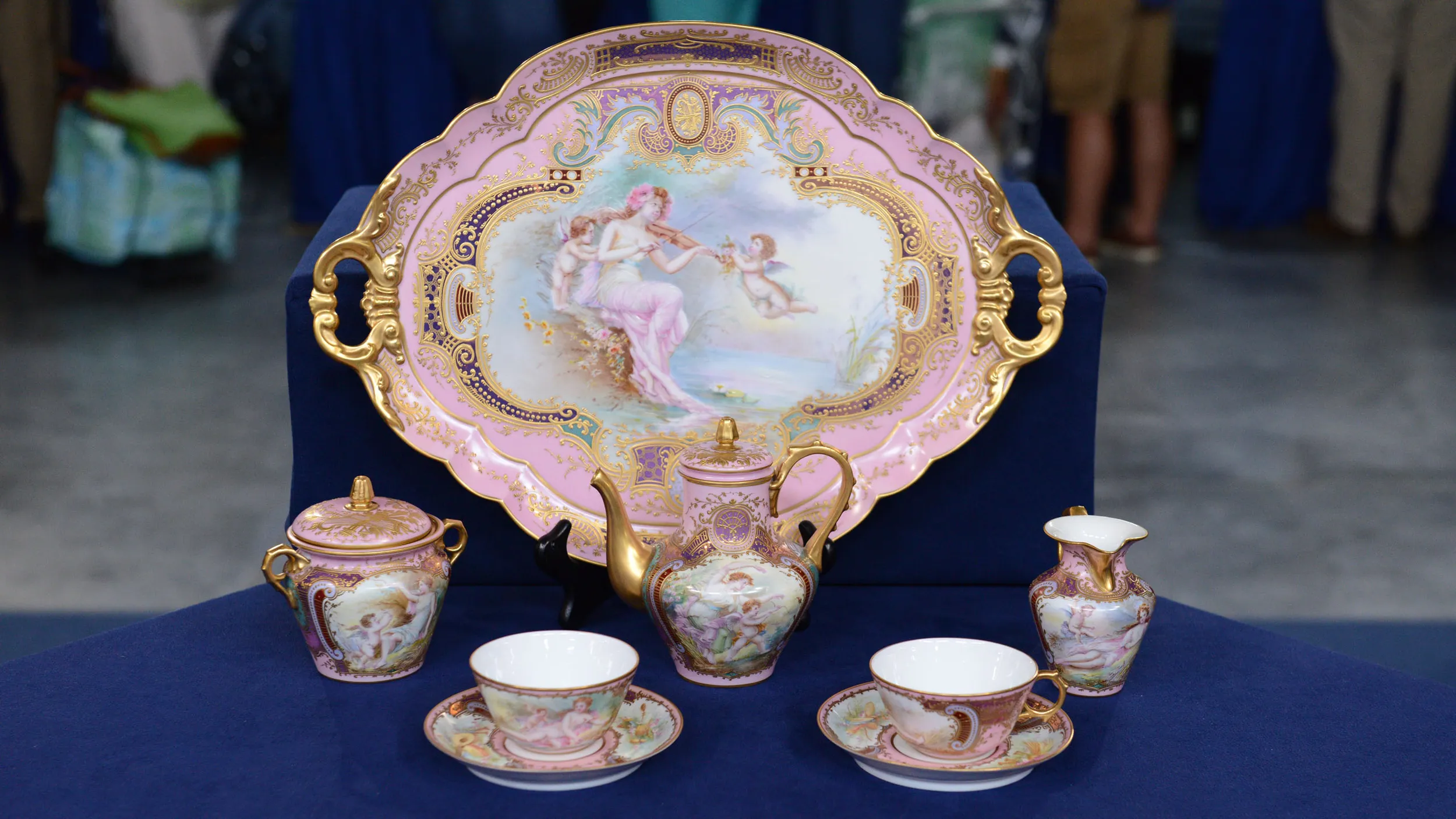
appraisal

appraisal
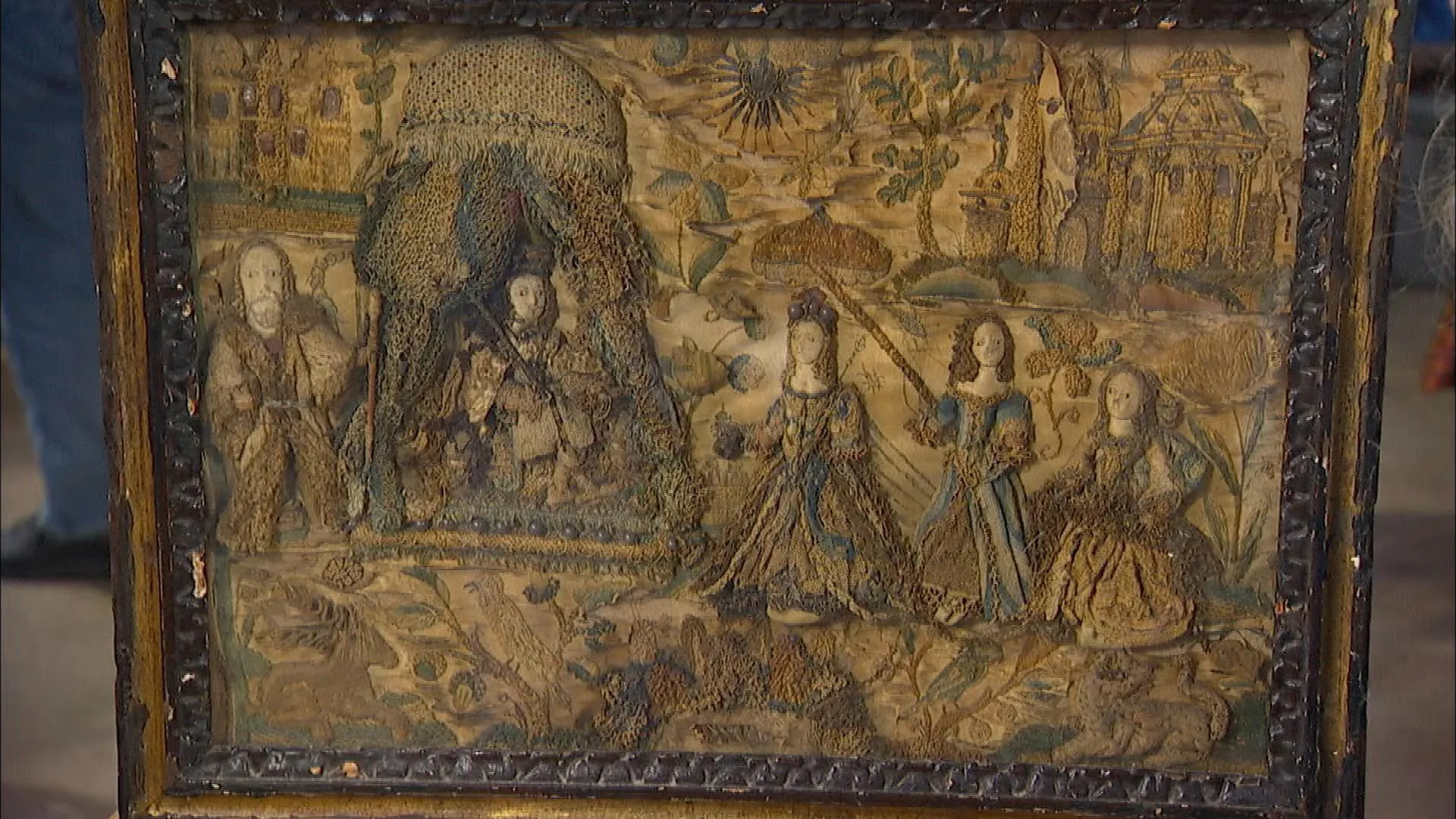
appraisal
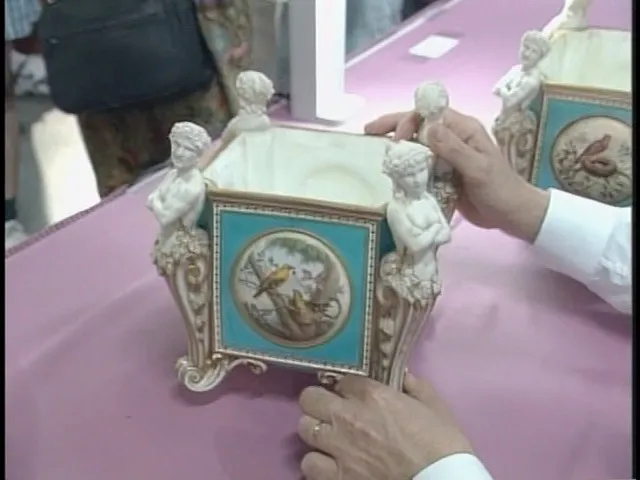
appraisal
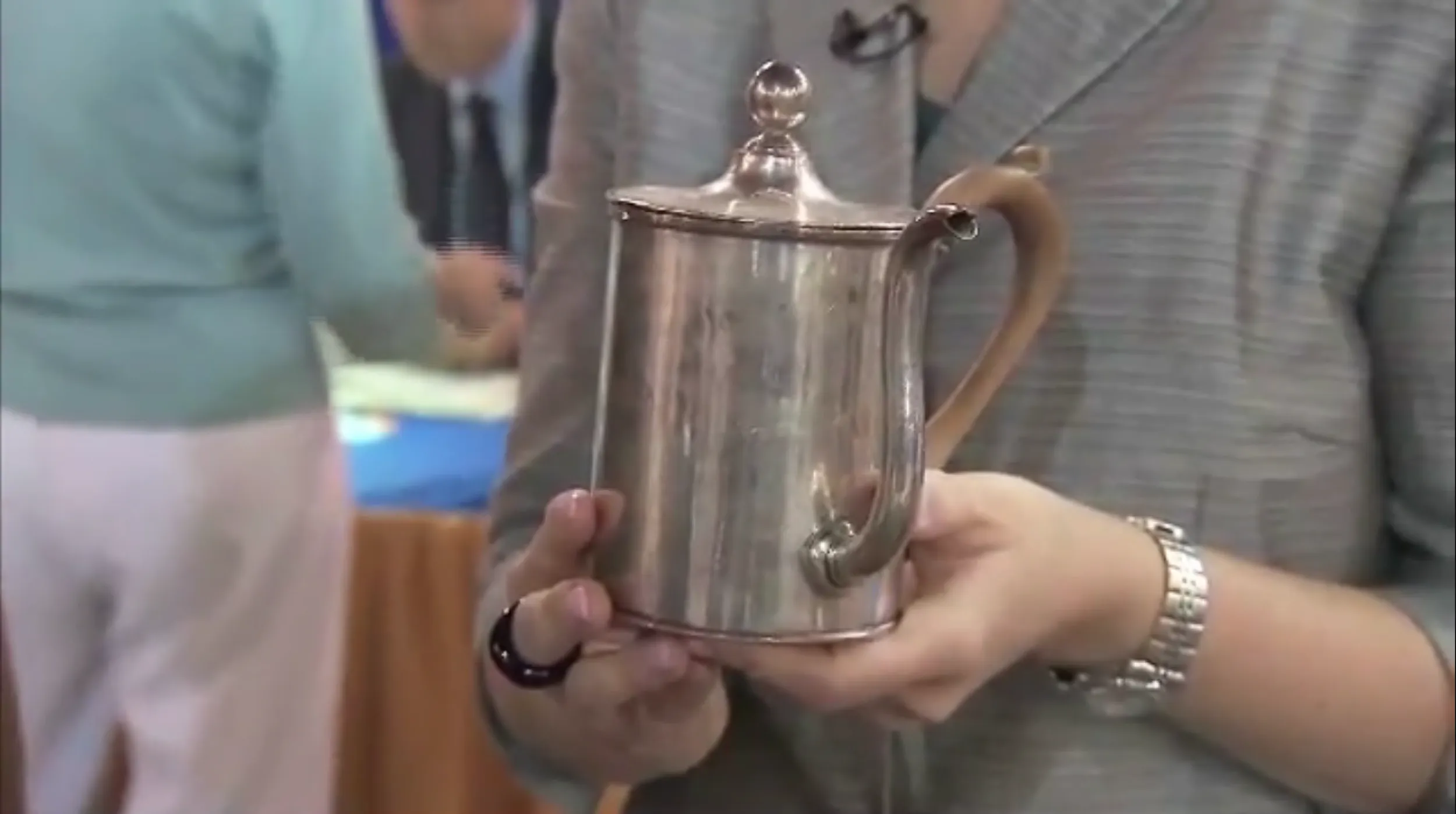
appraisal
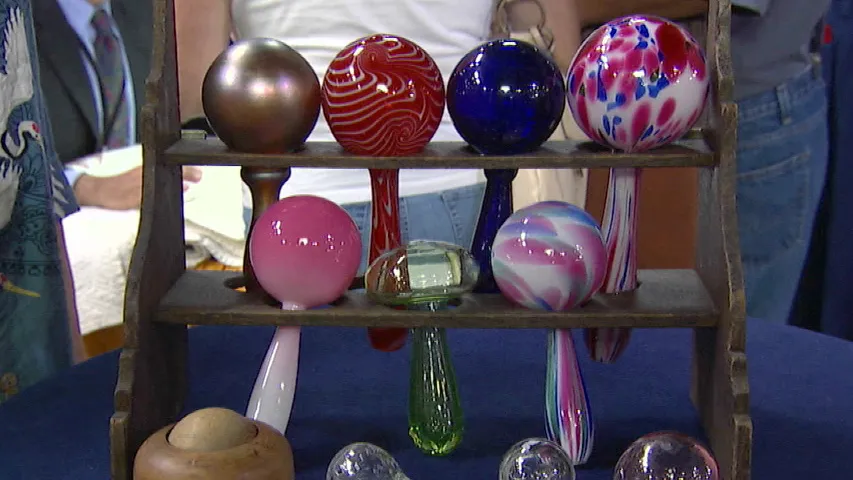
appraisal
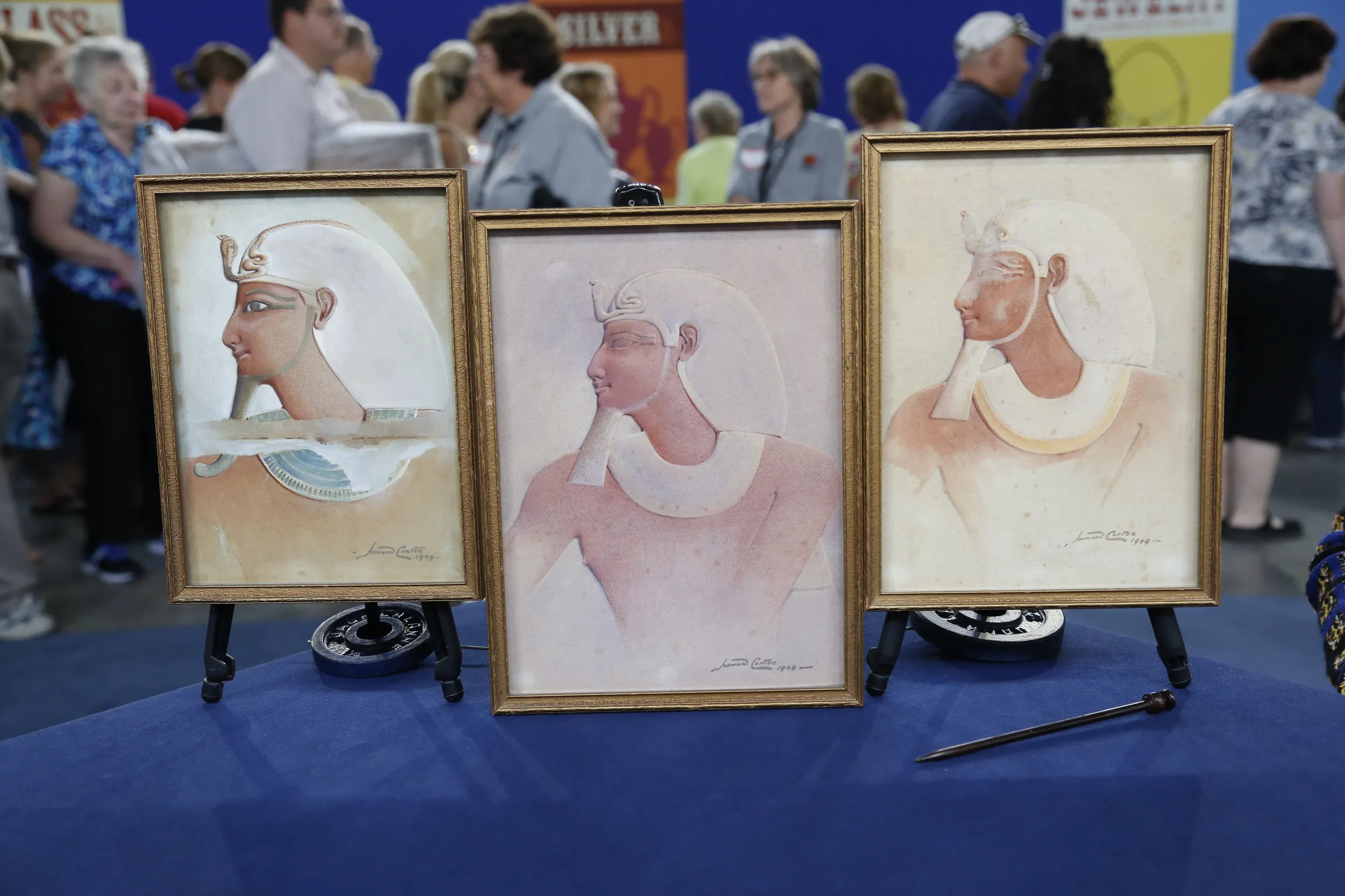
appraisal
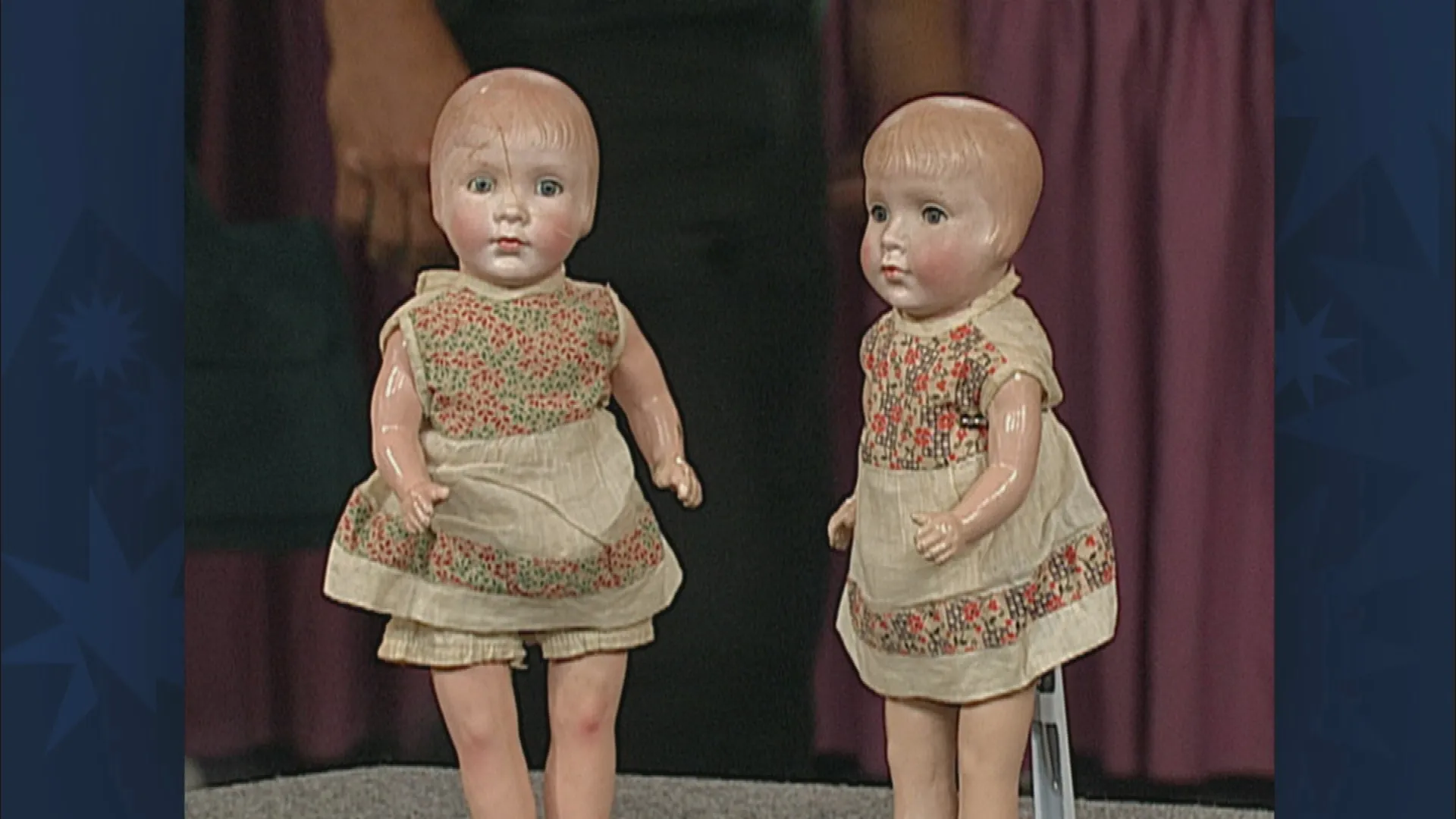
appraisal
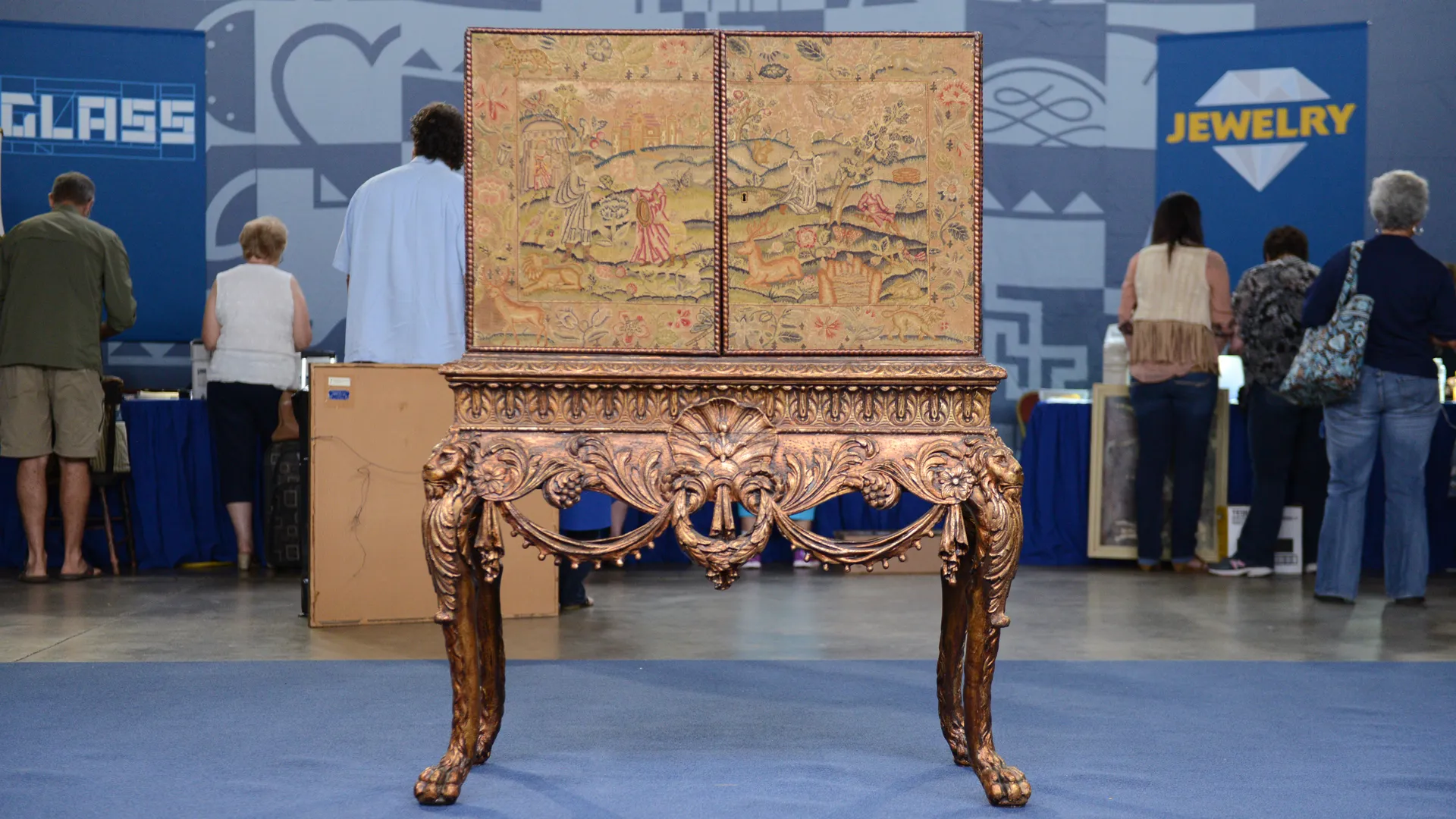
appraisal
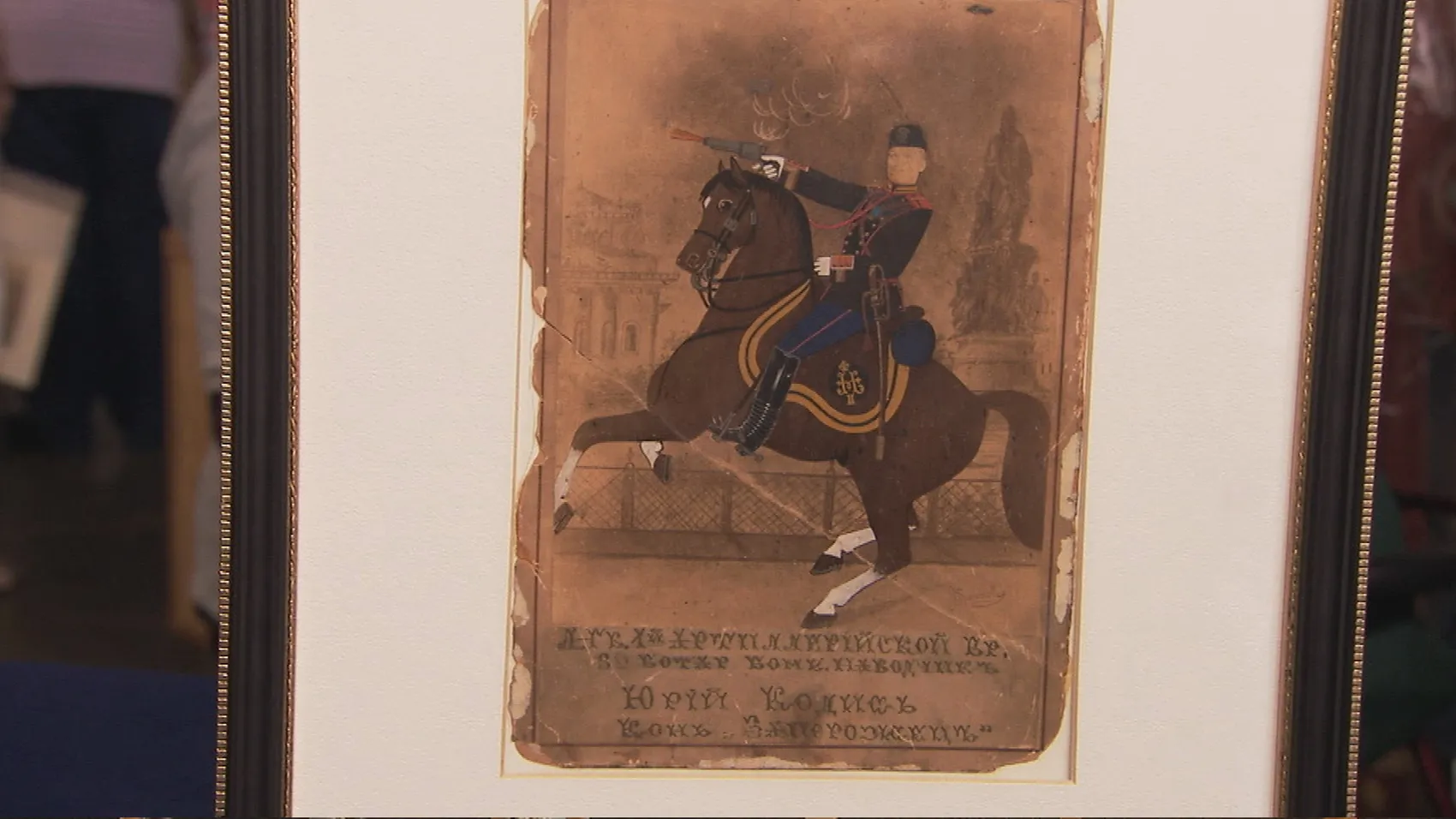
appraisal

appraisal
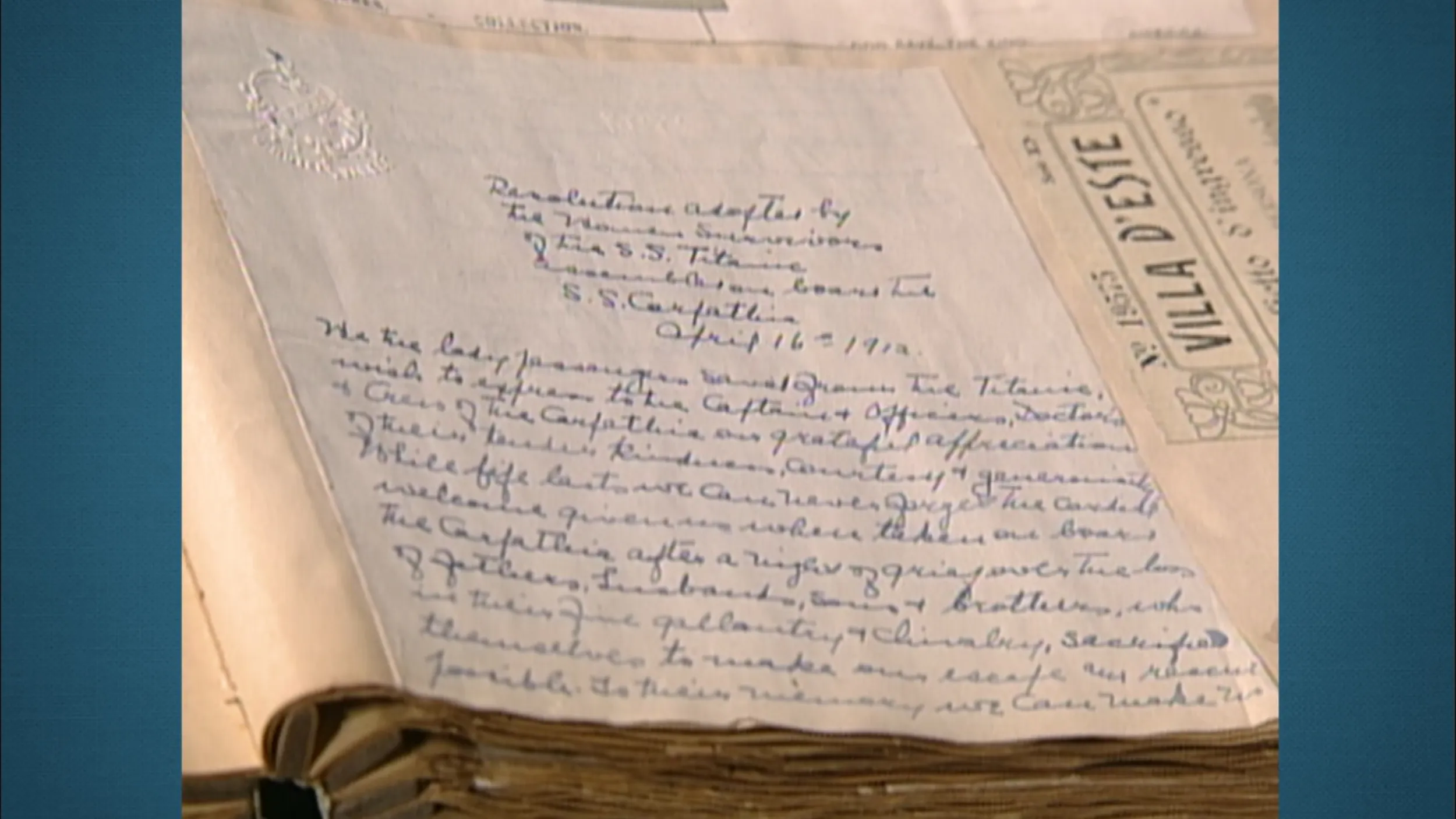
appraisal

appraisal
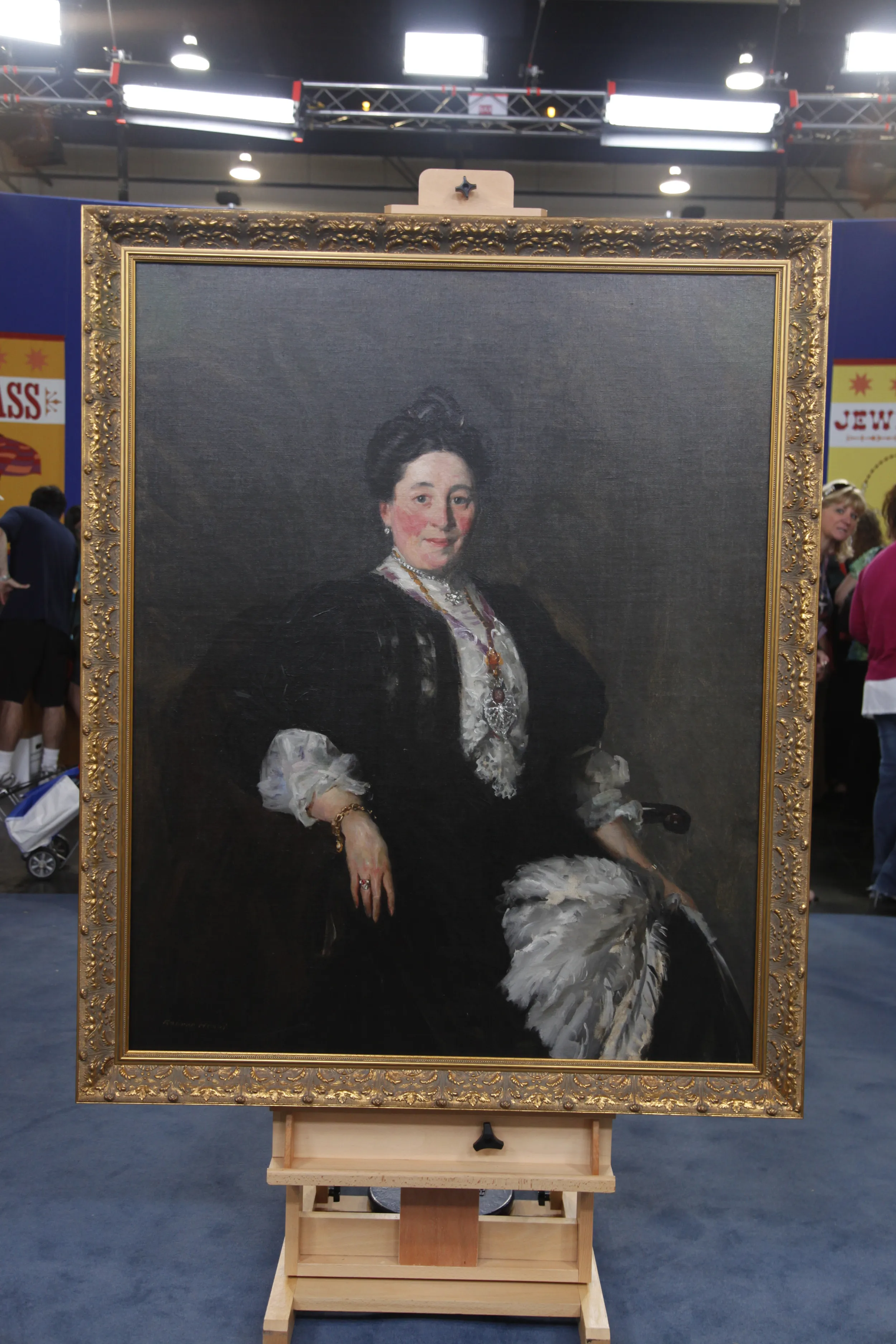
appraisal

appraisal
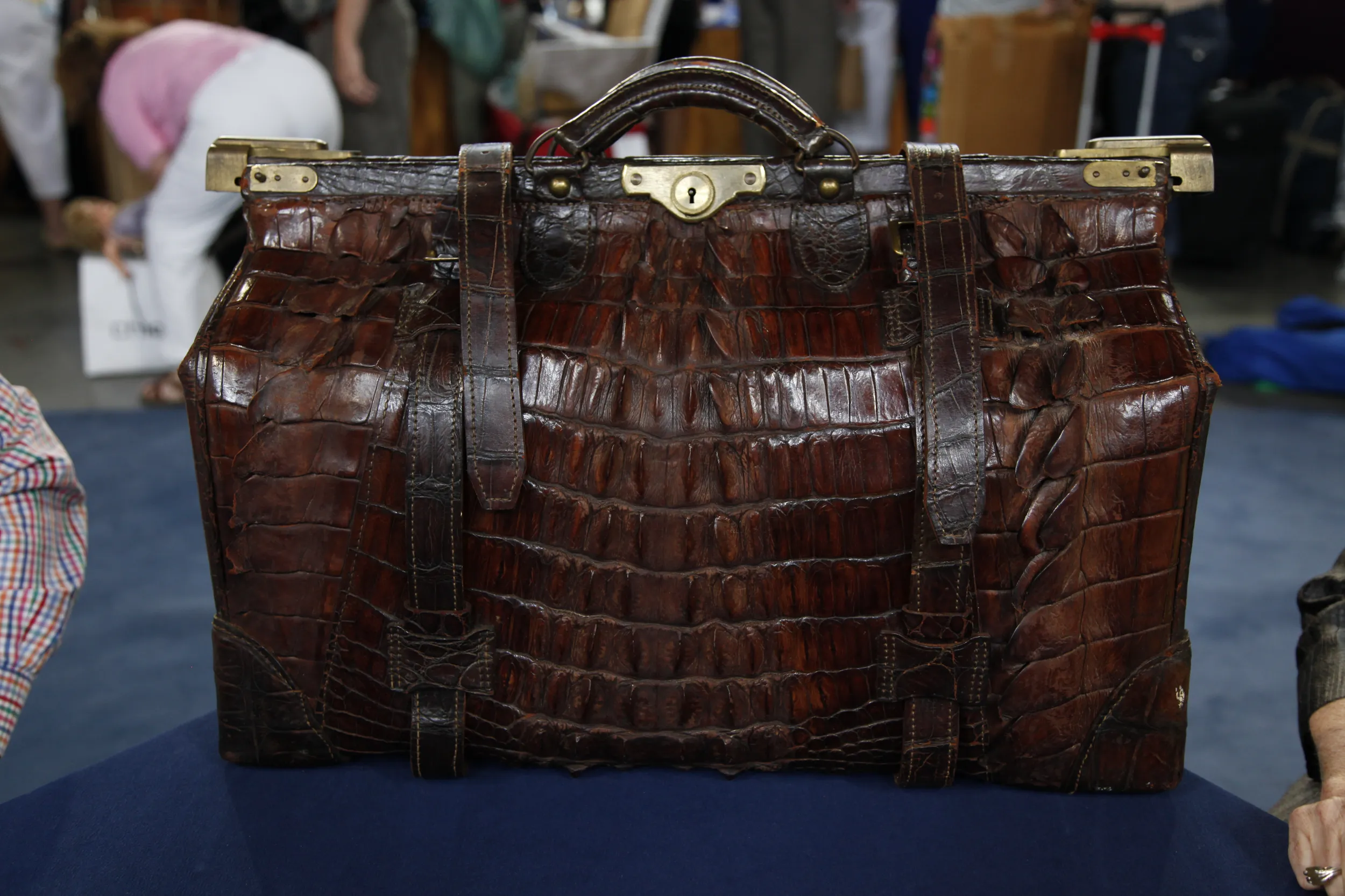
appraisal
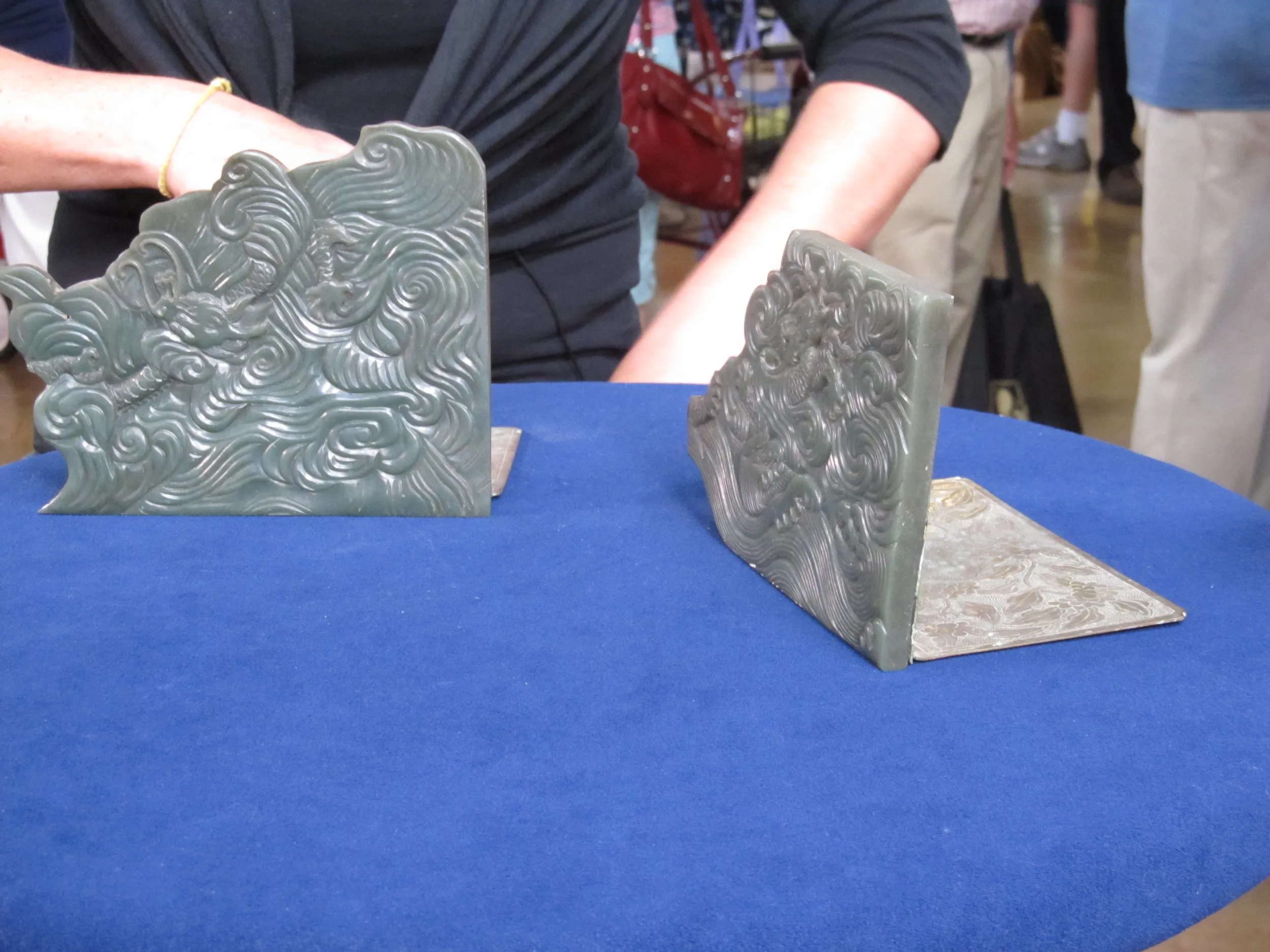
appraisal
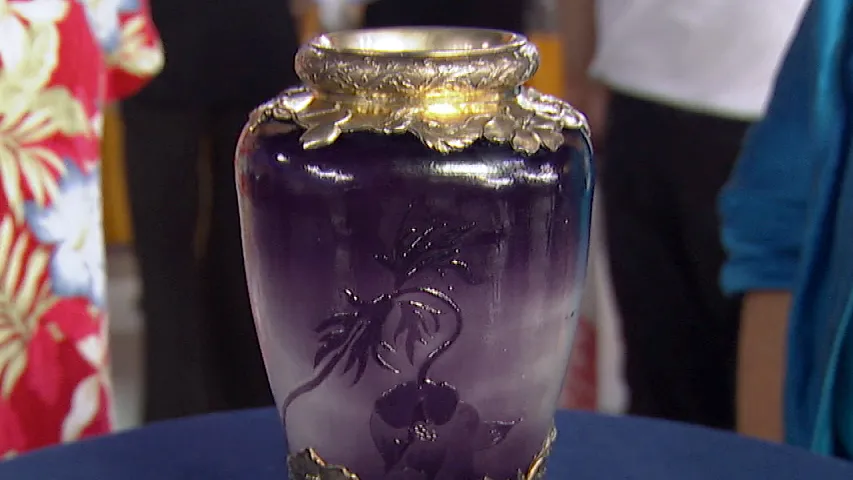
appraisal










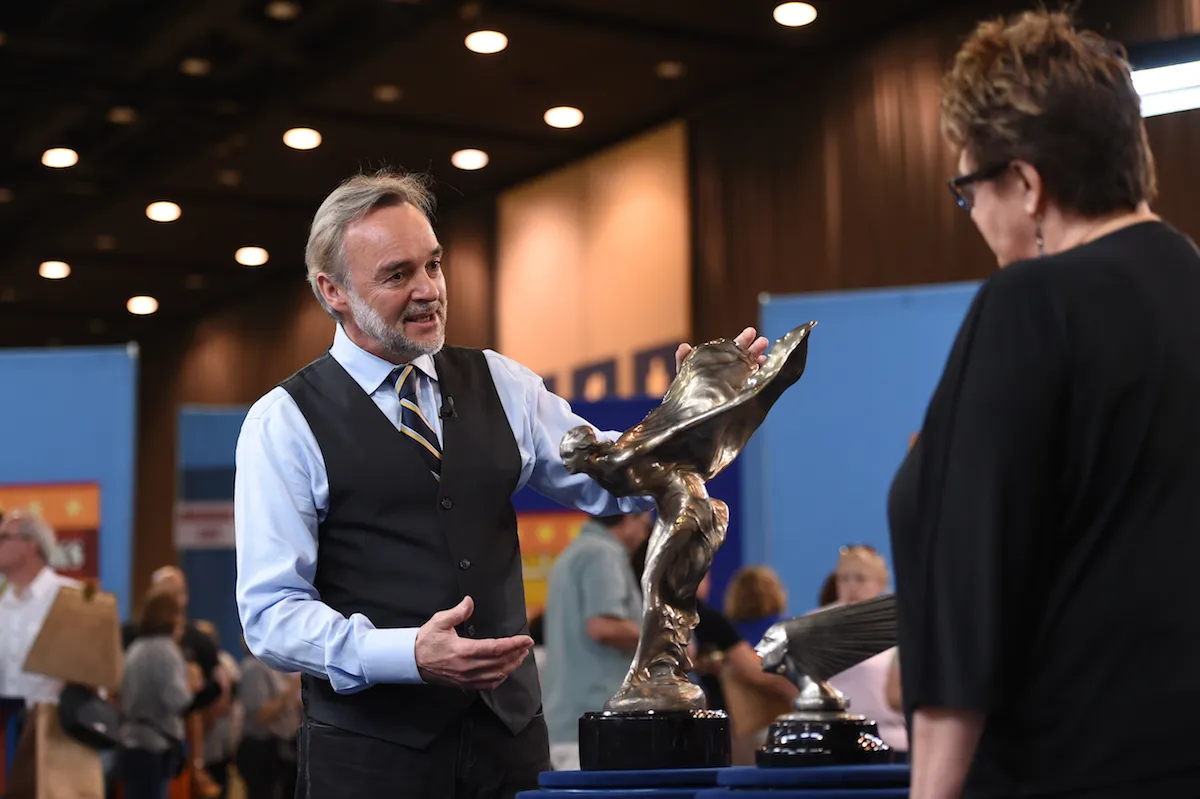
Appraiser Nicholas Dawes shares his expert advice for art and antiques shoppers on the hunt.
A weekly collection of previews, videos, articles, interviews, and more!
Funding for ANTIQUES ROADSHOW is provided by Ancestry and American Cruise Lines. Additional funding is provided by public television viewers.
ANTIQUES ROADSHOW is a trademark of the BBC and is produced for PBS by GBH under license from BBC, Worldwide. PBS is a 501(c)(3) not-for-profit organization.
A weekly collection of previews, videos, articles, interviews, and more!
Test your appraisal knowledge in ROADSHOW's new game — Price Range!







